« September 2004 | Main | November 2004 »
October 30, 2004
Greyworld

"first aid for urban spaces"
Andrem Shoban founded Greyworld in 1993 in Paris, then 2 years later they went back to London where they still have their studio. They do interactive urban art for the "people who buy cans of beans," not for the elite. Their installations try to involve the public as much as possible. In 2002, they created the ColourStops installation for five bus stops in Bradford, UK: in the bus stop shelters, Greyworld concealed color-recognition cameras that create sounds according to the colours they detect. The work tries to reflect back the variety of differences in people, Bradford being a very multi-ethnic city.
Three years ago, on the Millennium Footbridge in Dublin, they inserted sensors in the carpet covering the bridge to detect the size of feet, and the speed of your walk; according to these data, different sounds are generated so that you can walk to the sound of music or hear the sound of crunchy leaves or snow or the flop flop of water.
See also The Source that opens and closes the London Stock Exchange since April 2004.
The group is now working on Bins and Benches (flash presentation) to be installed in The Junction (London). This urban furniture is able to roam free in the Piazza area.
The benches love to be sat on, and they often take up position in new spaces to make themselves more attractive to potential human sitters. Sometimes, when it rains, they move themselves to drier, shadier areas of the square. To attract potential human sitting folk, they like to form patterns - the benches moving in to shapes in the centre of the piazza.
The bins are a little more solitary. It's a tough life being a bin, and they like to contemplate their humble lot on their own.
When the mood takes them, the surniture like to burst in to song. Sometimes, small clusters gather together and sing a tight six-part harmony, and occasionally, though much more rarely due to their shyness, the bins join in with their sweet soprano voices.
Each bench drifts slowly around the square, no faster than a strolling human, and is equipped with sensors that detect the presence of objects in its immediate vicinity, coming to a complete halt when any object is coming close. Via near near future
Posted by jo at 11:47 AM | Comments (2)
more on radio's history, #2:
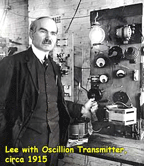
the radio voice
This carries on from the earlier post, more on radio's history, #1.
Marconi’s receivers could pick up morse code – but not the continuous oscillations of the human voice. It was Reginald Fessiden and Lee De Forest who developed the possibilities of continuous wave transmission that would make voice communication possible.
Fessenden, in partnership with Swedish engineer, Ernst F.W. Alexanderson, then working for GE, designed an alternator, a "critical breakthrough in radio technology and elegant evidence of Fessenden's genius in synthesizing his previous work in the electric power industry with his need for a transmitter" (Douglas, Inventing American Broadcasting, 156). By 1906 he had transmitted the human voice over a distance of 10 miles. Fessenden also established an experimental station in Brant Rock, Massachusetts, just south of Plymouth. From there he wrote to phonograph companies asking for a good phonograph and several records, especially recordings of Sousa, Caruso, and violin solos. At 9 p.m., Christmas Eve, 1906, when wireless operators of several United Fruit Company ships in the Atlantic, tipped off to expect something unusual on their NESCO*-provided sets, listened in, they heard Fessenden transmit a recording of Handel’s "Largo" on an Ediphone, play "Oh Holy Night" on the violin, and read from the bible before wishing them a Merry Christmas.
"The Christmas Eve program is still considered the first radio broadcast in American history…" (Douglas, 156).
Lee De Forest, on the other hand, "never shy of borrowing from the work of others" (Douglas), made use of the work of John Ambrose Fleming to produce a device known as "the audion." The prototype of the 3-element vacuum tube, De Forest’s "audion" was able to receive and amplify music and the human voice.
In 1909 De Forest began manufacturing wireless telephone sets for the Navy; and testing each set by means of phonograph records. "Much to my surprise," he wrote later, "many wireless amateurs and professional operators intercepted and enjoyed these test transmissions..." By 1914 he was broadcasting both music and voice from his laboratory north of Manhattan.
In later years, all inventors, Fessenden and de Forest included, would reflect back on their radiophone work as broadcasting. But their major purpose at the time was to make a fortune either by finding a wireless replacement for the wired telephone or by finding an acceptable system the Navy would use for all of their ships.
Between 1912 and 1917, the rights to the continuous wave components these inventors invented were transferred to large corporations like G.E. and AT&T. But while the corporations wrangled over turf and patents, it was "American amateurs [who] unwittingly revealed where the real radio profits lay" (Douglas, 291).
*National Electric Signaling Company, organized in 1902 by Fessenden and his two partners, Thomas Given and Hay Walker, Jr.
Posted by newradio at 10:15 AM | Comments (0)
Radioscape III
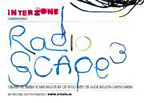
Mixing the City
In Radioscape III--a project by Edwin van der Heide--there are fifteen transmitters installed around and on the Leidseplein in Amsterdam, each broadcasting its own musical layer. Van der Heide designed a receiver that allows you to receive and mix the signals of two, three or more transmitters simultaneously. At a certain moment you receive one transmitter the strongest, the second a bit softer and the rest might be inaudible. By walking through the environment the balance between the transmitters is changing, new ones are fading in while others are fading out. Van der Heide: "The city centre forms a musical labyrinth with different layers of sound that, together, form a meta composition. By moving you mix the different layers which lead to new combinations and interferences."
Radioscape is open from Thursday the 28th of October till (including) Sunday the 7th of november. You can obtain a Radioscape receiver at the counter of De Balie. They can be fetched between 13:00 and 20:00
Radioscape is freely accessible for the audience. In order to borrow the receiver you have to deposit either 50 euro's or an id card. You have up to one hour to 'radioscape'.
Radioscape III is part of the Interzone series by De Balie, a series of artistic explorations crossing the borders between the existing artistic disciplines.
Posted by jo at 10:14 AM | Comments (0)
October 28, 2004
Geographic Doppelgangers
![]()
The Other Path
The Other Path is a project by C5 that combines landscape exploration with what I might call "speculative geography". C5 members went on a trek to collect GPS data about the Great Wall of China. They will sift through the mass of data they obtained about the Great Wall, to discover the most similiar terrain that exists in California (where C5 is based).
The project's intention is to "create exploration in a time when everything has been explored." An interesting objective, one that raises political and social questions about the value of exploration and its impact.
"The Other Path" is part of C5's Landscape Initiative. (Posted by Michelle Kasprzak)
Posted by at 02:06 PM | Comments (0)
prayingproject

Inventing a way to pray
Performance project in Exit Art's 10th Avenue window: CALL FOR PROPOSALS: For consideration in the prayingproject stop by Exit Art Thursday, Friday, Saturday October 28, 29, 30, 2-4pm to discuss your proposal with the curators.
prayingproject gives a stage and voice to spirituality as a form of cultural expression. Exit Art is an experimental cultural center that is exploring spiritual necessity with this project. Prayer is how you express yourself to reach a spiritual state, a personal initiative with reason and purpose, a way to have a private experience that is collective. The act of creativity is an act of contemplation and auto-analysis which has parallels in the act of praying. Praying is a way to reach our own divinity, a performance in our lives that we are translating into a performance of art.
Exit Art invites you to submit a performance project to come and pray as you wish, in any form, any faith, with gestures that are natural to your personality and belief. prayingproject will be presented on a 10 ft long by 5 ft wide stage in the Exit Art 10th Avenue window, visible from the street and accessible in the gallery over a weekend in November.
Prayer is an action with purpose, an intimate expression that is beneficial and constructive. Praying is maybe the most intimate and profound freedom of expression. Discover your own way of praying - private, public, intense, sublime, vulnerable and powerful.
For consideration in the prayingproject stop by Exit Art October 28, 29, 30, between 2-4pm to discuss your possible participation. Please bring a drawing and one page description of your proposed project, and up to 10 slides, one video or one cd of your current work and sase.
Exit Art
475 Tenth Avenue (corner of 36th Street), New York, NY 10018
Exit Art is a nonprofit art space with a mission to create and present exhibitions and programs that explore the diversity of cultures and voices in contemporary art. It is committed to bringing to public attention the work of under-recognized and emerging artists who experiment with the convergence of visual art, video, music, film, design, and performance.
Posted by jo at 12:40 PM | Comments (0)
Online Magazine of the Visual Narrative
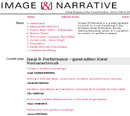
Image [&] Narrative
Issue 9. Performance--Guest edited by Karel Vanhaesebrouck--includes the following two articles:
Towards a theatrical narratology? Author: Karel Vanhaesebrouck Published: October 2004
Abstract (E): Traditionally narratology has always been associated with the study of texts and their constituting narrative elements. The analysis of theatre was then down-sized to the analysis of the theatre text. However, new developments in theatre and dance, in which the text is reduced to a mere peripheral element of the actual performance, ask for new analytic tools. How can a traditionally text-centred theory be transformed into a performance-oriented method for analysis, paying attention to the interpretive role of the spectator and taking into account the context the actual performance takes place in?
Performance and cognitive narratology Author: Jeroen Versteele Published: October 2004
Abstract (E): The last couple of years, (dance-)theatre companies that make use of ‘new media’ in their shows, have grown numerous and increasingly successful. This article focuses on some fragments in such productions that combine a theatrical setting with references to cinema language. It tries to distinguish three different relationships formal theatrical and filmic conventions can have with one another, and it relies on procedures in cognitive narratology to explain the effect such hybrids have on their audience.
Posted by jo at 11:13 AM | Comments (0)
MapTribe
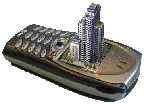
A tool for collaborative mobile learning
MapTribe is a software application for mobile phones. It enables group of users to see each other's position on a city map on the screen display, and to add on this shared map a certain number of objects that will positioned on the map according to the user's real position in the city.
MapTribe is based on the idea that every person retains and develops over time an image of the spaces s/he lives, which may be quite different from the physical inhabited place. It is commonly experienced, in fact, that places are enriched of psychological features that transform their perception. MapTribe is a tool for exchanging and comparing these personal images of the city among a group of friends. The tool we are developing helps people in analysing, capturing and visualizing this mental structure and to share it in a social network. From the negotiation of the differences between the maps of each participant in the group, a common understanding raises, an informal learning obtained by each user of the system about the image of the city.
Posted by jo at 10:37 AM | Comments (0)
Cell Phone Drum Machine

Collaborative Rhythm Generator with an SMS Interface
Cell Phone Drum Machine is a rhythm generator that can be controlled by users with their phones by sending text messages. Here's how it works: the operator links his/her phone to the computer and starts the drum sequencer. Users can then send special SMS commands to the operator's phone that controls the rhythm. The on-screen display shows from which phones commands originated.
Matt Hall and John Watkinson will present the project at dorkbot-nyc on Wednesday, November 3rd, 7pm at Location One in SoHo.
Posted by jo at 10:08 AM | Comments (0)
RE-PUBLIC

Drama, Mediation, Performance and Mobile Games
Intermedia at the University of Oslo has an interesting project about mobile gaming. RE-PUBLIC is a project that deals with humanistic perspectives on emerging digital communication forms & expressions & their information systems.
What are the dramaturgical and mediational features of commercial mobile games? Do location sensitive, always online, portable gaming terminals change the dramaturgical and mediational features of commercial mobile games? How will such terminals interact with ubiquitous computing in the physical environment to create new forms for hybrid games? How and to what extent are the less pre-scripted qualities of mobile and context-related play realised textually and interpersonally? How can the humanities inform and perform ICTs and vice versa? What can the study of computer games tell us about performance and the obverse? How can performance influence the design of computer games? What kinds of performances emerge in multi-player role-playing games?
Originally from pasta and vinegar, reBlogged on Clippings on October 27, 2004
Posted by jo at 09:29 AM | Comments (0)
The Click Sneaks
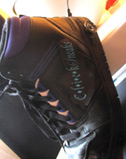
Tap for the Streets
New York designer and researcher Despina Papadopoulos, the founder of Studio 5050, had the idea for the Click Sneaks while walking down a cobblestone street, wearing sneakers next to a friend wearing stilettoes.
The artist recorded the "click" sound of high heels on a voice chip and had it activated on each step the revamped sneakers take. A speaker, an amplifier and a sensor acting as a "switch" on the sole of each foot, transform these seemingly normal sneakers into a sound performance.
Via Horizon Zero. originally from Popgadget: Personal Tech for Women, reBlogged by bev on btang reblog
Posted by jo at 09:07 AM | Comments (0)
October 27, 2004
ArtFutura
![]()
Augmented Reality
ArtFutura's theme this year is Augmented Reality. It's taking place now in Barcelona [October 28th-31st]. The programme includes Howard "Smartmobs" Rheingold, Blast Theory who will perform Can You See Me Now?, the SimpleTEXT performance, Dublin’s MediaLab Europe and Montreal’s SAT will be showcasing installations and developing experimental projects, Richard Marks, creator of EYETOY, Greyworld, Fiona Raby, etc. (via)

Saturday October 30, 2004 - 4PM - 8PM, Live from Barcelona, SAT presents Phéromones, the Art Futura's closing show. Phéromones is a network multichannel audiovisual techno performance regrouping musicians Alain Thibault, Physical Noise Theatre & Champion and VJ jocool , Ladyroll & Le couple in Barcelona as well as Yan Breuleux, Nuclear Ramjet & Johnny Ranger in Montreal.
Pheromones will connect by means of an optical fiber network of Internet 2 (providing data flows of up to 2 Gigabytes per second) the Mercat de les Flors at Barcelona and the head office of the SAT at Montreal in order to share music and images generated on both sides of the world, by means of an experimental technical support: eight audio channels and immersive multi-screens. R&D for clubbing culture.
From October 26 to 30, 2004
A team of 17 artists, researchers and technicians, as members of the Territoires ouverts - TOT - Open Territories consortium initiated by the SAT, are invited by the Art Futura festival to present their work in Barcelona.
Several of the tools developed at SAT, like the nSLAM multichannel audio application and pixelTANGO digital video mixer, will be put at contribution in order to show the know-how and the expertise of the developpers in the fields of IP streaming video and mulitichannel audio, IP telepresence (point-to-point and multi-point) and transmission of immersive audio-visual environments over IP networks.
The Open Territories project aims to foster the emergence of innovative forms of cultural expression by engaging the creativity of a new generation of artists and creators, in whose hands will be placed a host of advanced interface and networking technologies. The TOT project will be able to open the broadband network environment to talented creators who are ideally placed to illustrate broadband's potential as a means of avant-garde cultural expression.
Thursday October 28, 2004 - 10AM - 5PM
Friday October 29, 2004 - 10AM - 5PM
Saturday October 30, 2004 - 10AM - 4PM
SAT invites you and your friends to "cross the Atlantic" and project yourself at the beautiful Mercat de les Flors in Barcelona, site of the Art Futura Festival.
During the three days of the festival, using two Telepresence stations, people at both side of the Atlantic will be able to meet and speak as if they were sitting on the same table, with high audio and video resolution.
To participate and meet the catalan artistic community, Art Futura's visitors and the SAT team in Barcelone, come at the SAT Café each day between 10AM and 5PM (4PM Saturday).
Free entrance
Posted by jo at 02:00 PM | Comments (0)
The Wild is Calling

Call of the Wild
A project by Amos Latteier, Call of the Wild " is a series of audio tours of downtown Portland that are accessed by cell phone. The tours focus on plants and animals in downtown, contrasting them to their human cohabitants. Using natural history, philosophy, and humor the tours reveal urban biological systems that we see everyday but seldom notice.
Urban ecosystems demonstrate how technology and the urban environment mediate nature. Starlings, pigeons, and moss show us how to adapt, survive, and flourish in changing and artificial surroundings. Call of the Wild examines urban wildlife with an eye to the lessons it can teach us about our own technologically mediated lives.
Cell phones provide a unique, practical, and fun venue for conducting audio tours. Cell phones are already an integral part of the urban environment, and using them for audio tours transforms a device that normally removes people from the environment into one that help focus attention on it."
A wonderful concept, and an effective example of the possibilities for creative content delivered to the public via cellphones. (Posted by Michelle Kasprzak)
Posted by at 01:26 AM | Comments (1)
A Taxi Tour of Site-Specific Video

Teletaxi
A project by the Year Zero One collective, Teletaxi is a site-specific media art exhibition in a taxicab. The taxi is outfitted with an interactive touch screen that displays video, animations, music, and information triggered by an onboard GPS (Global Positioning System) receiver which allows the displayed artwork to change depending on where the taxi is in the city. With the combination of the media/gps technology, the mobile environment and the passenger/audience inside the cab – the seven artists in teletaxi are offered a unique set of possibilities for showing their work - both technically and thematically.
Teletaxi exposed interactive media art to a normally passive audience, by presenting works that explore notions of intimacy, mapping, subterranean space, simulated cities, information architecture, data-visualisation, public interventions, surveillance and psychogeography.
Of note is David Jhave Johnston's project, Gridlock, which was included in the first public presentation of Teletaxi. Gridlock treats GPS as a number, which may be changing or not changing, rather than a number that refers to a location. Therefore, when the number does not change for a period of x seconds, the taxi is not moving, and there is a possibility that you are stuck in traffic. The Gridlock piece is triggered by this lack of movement, and offers a Flash-based game for frustrated taxi passengers. (Posted by Michelle Kasprzak)
Posted by at 01:07 AM | Comments (0)
October 26, 2004
Touch Over Distance

Melt
Melt, by Slavica Ceperkovic and Nicholas Stedman, is a telematic installation in which the touch of a person in one country melts a block of ice in another. A table with embedded sensors registers the touch of installation visitors in France, which is then transferred and translated through the Internet and activates heat sensors embedded in a block of ice in Canada. The ice traces the presence of the visitors through melting and refreezing. The image of the ice can be seen via a live web stream projected in the space in France, so that the visitor can see their impact. This piece was installed with the sensor station at Le Fresnoy Studio National des Arts Contemporains in Lille, France, and the receiving station at the Banff Centre for the Arts, Banff, Canada. To see documentation stills and video visit the websites of Slavica Ceperkovic and Nicholas Stedman. (Posted by Michelle Kasprzak)
Posted by at 06:20 PM | Comments (0)
Ken Feingold

The Interactive Art Gambit
"Going back even farther in time, looking for cultural formations which are now familiar aspects of interactive art, I was struck early on by the essentially interactive nature of shrines, and other somehow consecrated public places. What differs here from the contemporary interactive artwork which relies on, as Crichton said, temptations and sources of curiosity--here the encounter is ritualized and made into theater. It is performative, highly prescribed and passed on from generation to generation. In the ritualized encounter, there is quite often an actual physical exchange which is also a symbolic exchange. One leaves something, in a certain way, and takes something away--usually as a mark upon the body. It is generally performed by simultaneous actions of touching and looking, but here, very importantly, and in most cases completely absent in interactive art, the voice of the participant plays an important role."
Read "The Interactive Art Gambit" ("Do not run! We are your friends!") by Ken Feingold, Technology in the 90s presentation, The Museum of Modern Art, NY, April 7, 1997.
Also from Ken Feingold's web site:
The History of the Interface in Interactive Art, Söke Dinkla, 1994
Seeking Deeper Contact: Interactive Art as Metacommentary, Erkki Huhtamo
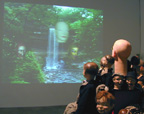
Self Portrait as the Center of the Universe takes up and extends the themes of Séance Box No. 1 (1998-99). The self-portrait animatronic head has open-ended, improvisational conversations with its alter ego, a virtual head that appears as the central figure in the projection. Like If/Then, the conversations between these two figures do not include the audience; rather, they interact only with each other. Their conversations are generated in real time, utilizing speech recognition, natural language processing, conversation/ personality algorithms, and text-to-speech software. The physical side of the conversation is performed by an animatronic figure (a speaking silicone cast of my head) and the central subjects of their conversations revolve around, on one side - generalization and distance; and on the other - questions and memories of himself. These conversations, bridging real and virtual spaces, are within video-like digital scenes that recompose themselves based on the nature of the conversation between the two main characters. The subject of the conversation, as determined by the artificial actor, controls the landscape which is seen, so these change as the conversations go along, and other figures appear and disappear. The scenes are also populated by figures - autonomous "software agents" in the form of realtime 3d computer animation - which appear in the projected image-world that fills his vision.
Posted by jo at 08:51 AM | Comments (0)
Kirk Woolford: Reckless Eyes

Sharing the Technical Gaze
"The concept of gaze has taken a radical shift over the past 50 years. With the advent of the CCD, surveillance cameras have spread numerous gazes across our cityscapes. The gaze of technology is different than the gaze of biology. The technical gaze can hold, record, and re-present the images before it. Most importantly, the technical gaze can be shared - either through re-presentation of the recorded images, or through live transmission.
From 1994-1996, Steve Mann, the grandfather of wearable computers, wore a wireless camera and receiver for almost every waking minute of his life (he took them off only swim, shower, and sleep). Both the camera and display were connected to the Internet so visitors to Steve's www site could see what he was gazing upon, and if a visitor sent him an email, it would pop up in the display before his eyes. Steve tells jokes about viewers to his website telling him to say hello to people the recognized or chastising him for "ogling cleavage."" Read Reckless Eyes by Kirk Woolford.
Posted by jo at 08:19 AM | Comments (0)
October 25, 2004
Street Stories
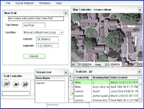
Social Computing, Maps and Storytelling
Last week, we attended Warren Sack's lecture at Rhode Island School of Art and Design (RISD). Sack referenced the writings of Robert Putnam (Bowling Alone: The Collapse and Revival of American Community), Guy Debord (The Society of the Spectacle or see this translation online), and Claude Shannon and Warren Weaver (information and communication theory + translation + A Mathematical Theory of Communication) to locate two of his well-known projects Translation Map, and Conversation Map, and a project that has gone through various phases and is still under development, Street Stories.
About Street Stories: For geographically-based community members, many local places have stories associated with them. Some of these are commonly-known stories; others are personal narratives associated with, for example, the house of one’s childhood or the place along the old train tracks where the sweetest blackberries grow. But when people move elsewhere or (sub)urban development paves over an area, the stories are decoupled from the places and the places lose their vernacular particularities and are transformed into much more generic spaces. As increasing numbers of geographically-based communities are displaced by network-based communities, the places of community–and their associated stories–are lost.
The goal of this research project is to invent new places of community memory and communication for the network society through the creation of a new practice and technology of storytelling. Prototypes of the proposed technology already exist. Many museums and historical sites have created audio tours by lending visitors a tape, recorder, headphones and instructions on when to start and stop the tape to hear the recorded story associated with the given place or artifact the visitor is looking at. Technologies of this sort that can automatically detect the visitor’s position in a defined space. The proposed technology is a digital, networked device (built using a wireless technology, global positioning system, and a handheld computer) that will allow visitors (or locals) to record and leave their own stories at any geographically specified location they desire.
Posted by jo at 01:12 PM
Mobile Technologies and Wireless Networks
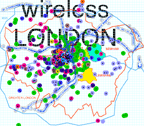
WORKSHOPS at SPACE
Workshops will be run by SPACE's Media Technologies Specialist Peter Chauncy in partnership with practitioners working in related areas. Workshops will cover the following:
Thursday 18th November: Wireless Free Networks - desktop 2 rooftop Omni Directional Antenna Building; with James Stevens from Consume.net
Tuesday 23rd November: An Introduction to Wireless Networking-A Wireless Rig; with Psand
Thursday 25th November: Portable Devices - iPAQs, mobile phones and GPRS; with Giles Lane from Proboscis
Monday 29th November: Locative Media - Global Position System (GPS) devices; with Ambient TV
Each workshop will include:
*An introduction to the technology
*Examples of practice
*Discussion around related concepts and critiques
*Instruction in using equipment and an opportunity to test it
All workshops cost 25UKP and places are limited.
To apply please contact Marina or Paul on 020 8986 5998 or email
spaceplace @ pacestudios.org.uk
Places will be allocated on a first come first serve basis
All workshops will be held at SPACE Triangle, 129 - 131 Mare Street, London E8 3RH Workshops will all run from 10:30 - 17:00. Please advise us where possible, if you're going to be late. SPACE Triangle is fully wheelchair accessible.
Please let us know if you have any other access requirements.
For more info check out:
Bow Wireless http://www.bowfestival.org.uk/Bow_wireless.htm
The State of Wireless London by Julian Priest
http://www.ambienttv.net
http://www.proboscis.org.uk
http://psand.net/
http://www.consume.net
Marina Vishmidt/Paul Gardiner
Media Arts Administrators
Space Place
43-45 Dace Road
Fish Island
London E3 2NG
Tel: 020 8986 5998
Fax: 020 8986 6887
email:spaceplace @ spacestudios.org.uk
http://www.spacestudios.org.uk
Posted by jo at 12:58 PM | Comments (0)
[Locative Media]
Why Geo-Annotating Location?
The blog Future Now dealt with the use of geotagging. I have always been amazed by this topic, especially with regard to how people will use it. There are many projects like Urban Tapestries, GeoNotes, Mauro’s projects…
The author proposes a kind of typology of geotagging uses (listen mauro!): There are 2 types of messages: "I was here" or "You are here".
People will take the time to compose a message and tag that message to a place because they want you to know that they were there, or because they have information that will be relevant to you later when you’re in the same location, or some combination of both.
From pasta and vinegar, October 25, 2004
And then, each of those 2 categories could be divided in:
the “I was here” motivation will be largely emotionally driven. Examples: 'This is the place where he proposed'; 'I needed to mark the spot where occurred'; 'I’m a tourist and really having a great time'; even 'I lost a bet, as part of my payoff I have to mark the spot where...' Ultimately, these types of annotations are still meant for other people – what is the sound of an unread geo-annotation? – but the value for the viewer will largely be to participate in someone else’s experience and get a sense of the unrecorded history of a place.
(…)
The "You are here" motivation for leaving physically-tagged messages would seem to offer more utility for both person tagging and person viewing. Examples: geo-personals ('if you’re in this location, you might be my type'); geo-classifieds ('if you’re here on this bike trail, you might want to buy the bike I’m selling'); announcements ('if you’re here, you might want to come to my event'); community organizing ('we're often here…if you are too, join us next time'); tips/assistance/warnings ('if you’re here at night, be extra careful', or ‘here’s what worked for me…'); lost&found (’if you're here, do you see the bracelet I lost?'); temporary notes ('if you’re here, we were here…an hour ago! now we’re at the party'); gaming and scavenger hunts (even incorporating features of the location – imagine GeoEverQuest in Central Park); and filling in gaps left by other annotations ('Did you know that this spot will be the site of Starfleet Headquarters? I bet *that* isn’t on the official geo-tour!').
I fully agree with the conclusions of the author: there are 2 crux issues: interface and people's adoption. The system is so related to people's use that it needs a critical mass of users (the system itself does nothing, it’s just a kind-of shell that allow a new type of interaction).
peterme argues that the author is wrong. He discusses the notion of doing stuff for yourself or for the others. He takes the example of del.icio.us. Why would you want to annotate space for yourself? For whatever reasons you would use del.icio.us. While del.icio.us thrives as a “social bookmark” site, it depends on the me-ness of the activity – by and large, I’m saving items to del.icio.us that interest me, that I might want to return to later, and the posting-for-others aspect is largely secondary. It’s an added benefit, but not the raison d’etre.
(…)
In fact, I would argue that if people are annotating space only to serve others, it will never, or only rarely, happen. What do I care what some stranger 8 months from now thinks about what I wrote at the corner of New Montgomery and Market in San Francisco? What on earth could I possibly say that’s meaningful to them? What benefit do I derive by acting as a tour guide to a stranger?
Comment »
1. In fact I argue that the key idea here is “communication". We leave these notes for communicating with our peers. Accidentally, we might be interested in strangers or putting lot of effort for others to recognise our persona. At the contrary we are more willing to spend time and energy to be in touch with our firend and to accomplish and acknowledge our connectedness.
Comment by Mauro — 10/25/2004 @ 3:04 pm
Posted by jo at 11:52 AM | Comments (1)
October 23, 2004
Wirefire

Touch Through the Wires
Wirefire was an online performance and communications environment. The project, by entropy8zuper's Auriea Harvey and Michaël Samyn, utilized technology they developed to faciliate 'touch through the wires', combining chat, sounds, images, animations and live camera streams to form an interactive, improvisational expression that went beyond words. Wirefire is currently available in RANDOM FIRE/REPLAY VIEW only. [Flash 5 plug-in required.]
Wirefire was LIVE online every Thursday night at Midnight to Friday 1am ( Belgian time). Wirefire was meant to be performed and viewed online but non-virtual Wirefire performances were presented in venues such as the Brooklyn Academy of Music, New York; the Walker Arts Center; Minnesota; GMI screen, London; and Passage44, Brussels.
Posted by jo at 06:27 PM | Comments (0)
October 22, 2004
GilbertandGrape

Kiosk Correspondence
We'd like to invite you all to receive exclusive reports of GilbertandGrape's whereabouts at the Rogaland Kunstsenter, Norway and the Vlepo Gallery, NY. The performance can also be partly viewed online. GilbertandGrape will be staked out in a red phone kiosk by the pier on the west coast of Norway between 5pm and 7pm on October 25th, 2004. GilbertandGrape will call the Rogaland Kunstsenter from the phone kiosk every 15 minutes and upload a photograph from this moment to their website.
Kiosk Correspondance is a sub plot of the GilbertandGrape performance Lone Ranging Romance. Between 2004 and 2008 GilbertandGrape and their lone ranger, a 20 kilo stuffed moose head, will travel the coasts of England and Norway in a Volvo Amazon to search out and collect stories from people with an interest in nostalgia, document vague memories, exchange taped music that has romantic significance, and at the end of the day watch the sun set together with the people we've met. For more information on Lone Ranging Romance see our website. Love and Scandal, GilbertandGrape
Posted by jo at 03:53 PM | Comments (0)
Guest Blogger: Michelle Kasprzak

Welcome to Michelle Kasprzak, who joins us as guest blogger today. Michelle is an award-winning artist, writer and lecturer. On the faculty of the Canadian Film Centre's new media programmes, she designs and delivers curricula that address the most recent creative applications of new technologies. Michelle is also currently a member of the Mobile Digital Commons Network, a cross-disciplinary research group funded by Heritage Canada for the purpose of investigating the transformation of public space through the development and deployment of location-specific content. [see this article/interview about warchalking]
And thanks to Nathaniel Stern for his wonderful contribution.
Posted by newradio at 10:14 AM | Comments (0)
October 21, 2004
Psychogeography
"In psychoanalysis the word psychogeography is used in relation to phenomena of location based hysteria: you are perfectly sane, you enter a particular room and within a split second you are stark raving mad. Only when this response is universally shared and not dependent on a random individual neurosis, this power of a room can be called psychogeographic... In the end psychogeography is not about intervening through constructing (or demolishing) physical objects but about constructing narrative structures on top of what already exists."
From "Do-It-Yourself Urbanism: Psychogeography, Generosity, Serendipity and Turriphilia" by Wilfried Hou Je Bek/socialfiction.org
Posted by jo at 06:12 PM | Comments (0)
Come Closer

The Edges of Personal Space
Continuing squidsoup’s explorations into immersive intuitive media and the boundaries between virtual and physical space, Come Closer uses wearable technology, wireless networking and stereo vision to explore and expand on our sense of personal space and proximity to others. The closer two people get to each other, the more acutely aware of each other’s presence they become. This sensation may be comforting or disquieting, but participants are encouraged to transcend the normal barriers of personal space and explore the meaning of closeness in both virtual and physical terms. The space between people is filled with sound that is affected by their movement and position. With more people in a room, complex harmonies begin to appear and disappear, allowing scope for cooperation and confrontation, intimacy and rejection.
Posted by jo at 05:45 PM | Comments (0)
Malleable Music

Social tech is performative
"...Malleable Mobile Music system is my idea of truly social (i.e. performative) mobile tech.
"'Historically, music was never meant to exist in isolation,' Tanaka says. 'There was always a physical, acoustical, and even social context. These kinds of technologies can add some of those elements back in to the listening experience'...As one participant naturally sways to the groove, the PDA's motion sensor detects his motion and shifts the tempo of the song. With the song's intensity building, another listener subconsciously grips her PDA tighter, introducing echo effects into the mix. The closer that listening partners move to each other, the more prominent their part in the song becomes. Meanwhile, the software applies various 'error correction' techniques to prevent an onslaught of arrhythmic noise, unless of course that's the goal. As they listen to it, the mobile music orchestra transforms the tune into a dubby, spacey version of the familiar Bjork song...Someday, malleable music may even become an art form in its own right, leading to a duet between the artist and the audience."
Check out the Ubicomp 2004 paper for more detail. Originally posted by Anne Galloway on purse lips square jaw.
Posted by jo at 11:43 AM
October 20, 2004
1 year performance video
Help 1 year performance video
MTAA’s web art project 1 year performance video is a victim of it’s own success. The piece lives on Turbulence.org and it’s causing bandwidth overages. It’s a commission of New Radio and Performing Arts, Inc., (aka Ether-Ore) for its Turbulence web site. They are a not-for-profit arts organization that has been commissioning web and net art projects since the early days of the medium and they simply can’t afford the overage charges.
If you have resources to help us continue to serve this piece on the web please contact T.Whid using the email link on mteww.com/mtaaRR (near bottom of the left nav). If you are considering helping out, check out the piece: 1 year performance video.
mriver adds:
Please, please, please. We’ll behave for once AND we’ll give you a real live MTAA drawing. (9 x 12, ink on Arches watercolor paper) Ooo- la-la.
Originally posted by twhid at MTAA on October 20, 2004.
Posted by jo at 03:15 PM
Public Displays of Affection
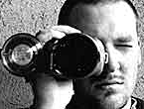
Affect and its Exhibition in Public
Public Displays of Affection
An Interdisciplinary Graduate Student Conference
Visual and Cultural Studies Program
University of Rochester
Friday, April 8 & Saturday, April 9, 2005
CALL FOR PROPOSALS
Civility can be viewed as a series of performances that generate a range of emotions, including the patriotism of war, the joys of shopping, and the fear of urban crime. The public display of affection constitutes a contest of meaning in which various appeals are made to organize the emotional life of the individual and the rules of decorum. To be convinced of this idea one only has to turn on the television. From the not-so carefully scripted emotions of the recent Presidential debates, to the ongoing pageantry of heteronormative romance, to the proscribed images of mourning for war casualties, it appears that the politics of putting your heart into the public sphere are by no means certain, but certainly meaningful.
PUBLIC DISPLAYS OF AFFECTION aims to explore the value of affect and its exhibition in public. Disturbed by formations of the public sphere as a wholly rational space for the exchange of collective ideas and actions, we turn instead towards the multiple meanings or uses of public feelings. We are interested in the specificity or uniqueness of emotions and how they shape historical moments and geographic sites.
We invite proposals from across disciplines, research interests and theoretical persuasions that engage with P.D.A. through specific forms of display: museums, galleries, mass media, film, theatres, festivals, etc. Possible areas of inquiry might include, but are not limited to:
Nationalism and/or spectacular nations
Political protest
Public/private space
Public sex
Marriage
Family
Feminism
Queer history and theory
Empathy, sentiment, depression, rage and other kinds of affect
***DEADLINE for submissions: December 15, 2004***
Submissions for 20-minute papers should be in abstract form (250-500 words). A self-addressed stamped envelope must accompany all submissions requiring return. Please include e-mail addresses with all submissions whenever possible.
Abstracts and inquiries may be sent via e-mail to: vcsconf @ mail.rochester.edu
Printed submissions should be sent to:
Organizing Committee for "Public Displays of Affection"
c/o Program in Visual and Cultural Studies
424 Morey Hall
University of Rochester
Box 270456
Rochester, NY 14627-0456
ABOUT THE PROGRAM
The Program in Visual and Cultural Studies is an interdisciplinary graduate program at the University of Rochester. Its focus is visual culture and critical theory; the Departments and Programs of Art and Art History, English, Film Studies, Anthropology, History, and Modern Languages and Cultures, as well as the Susan B. Anthony Institute for Women and Gender Studies, constitute its academic base. Web site: http://www.rochester.edu/college/AAH/
Posted by jo at 02:39 PM
A map larger than the territory
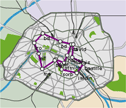
Mapping Flow, Crossed Paths
A Map Larger Than the Territory is a Web application that enables participants to represent their paths across the city using images, texts and sounds. Territory here is not a piece of land enclosed within borders but an interlocking network of lines or ways through. The map materialises and connects individual trajectories.
How does it work? Choose a city and a language. The map shows other people's paths in that city. A button at the right sends you to a blind map where you can add an itinerary of your own. To do so, you must first give it a name, a date and a color. Use the tools provided to locate places on the map and define points on your path. Each time you mark a location, a dialog box opens up for you to identify and describe it. When you have finished marking up your path, you can view the itinerary you have made.
Posted by jo at 10:42 AM
Geostash
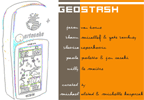
Hide, Seek, Act
Geostash is a public art project that uses the city of Toronto as its inspiration and utilises Global Positioning Technology (GPS) and the web as a means to achieve its creative goals. Geostash takes its cues from the practice of Geocaching (blogged here) - a sort of high-tech treasure hunt that was originally conceived in 2000, and has spread worldwide through websites promoting this activity. Each artist will hide a "stash" somewhere in the city and post the GPS co-ordinates of where the stash is hidden on the Geostash website. The stash may contain a set of instructions requesting an in-situ performance, or could contain objects, materials and a manual to create temporary public art. Once the stashes have all been placed in the city, each participating artist will be randomly assigned another artists' stash to find using a GPS receiver. Once found, the artist will transform the contents of the stash into a performance or ephemeral work of public art.
Date: October 29 - 31, 2004
Location: Various locations in Toronto TBA (check blog for updates)
Participating Artists: Jason Van Horne + Duncan Walker, Shawn Micallef
+ Gabe Sawhney, Slavica Ceperkovic, Paola Poletto + Jon Sasaki, Willy
Le Maitre
Curators: Michael Alstad & Michelle Kasprzak
Posted by newradio at 09:35 AM
October 19, 2004
step inside
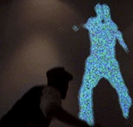
I swing, therefore I am
step inside, by Nathaniel Stern, is an immersive, multi-sensory environment that provokes us to re-think our selves as "collage[s] in motion," and challenges Cartesian notions of consciousness. step inside implies multiplicity and movement as intrinsic to our being; it asks viewers to explore the noise and stillness attendant on the performance of self. "I swing, therefore I am" (Elizabeth Ermarth, Sequel to History).
When 'stepping inside' the 3 x 3 x 3 meter interaction space, viewer-participants are immediately confronted with an amplified and echoed trail of noise. This, they'll soon discover, is the sound of each footstep they take, of all the footwork in the room. A video camera, opposite them and connected to the step inside software, reads their bodies, and separates them out from the background. However, instead of a video mirror, they see only a profile, and are disallowed a frontal reflection. This left-hand 'projection' fills their 2-D forms with white noise. The amplitude of the echoed footsteps controls the video's opacity. The 'result' becomes a variable wave of embodied noise. step inside is part of Stern's non-aggressive narrative.
Posted by jo at 10:44 AM
Proboscis
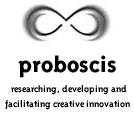
Actors, Agents and Authors
"...Proboscis is trying hasten the arrival of a world where people author as well as consume."
"I believe that this radical shift in information flow and control away from large institutions (both public and private) to ordinary people could have a profound social and cultural impact on the uses and implications of wireless and mobile technologies and mobile technologies in daily life, as well as social and community relations. I believe that the future for our society lies in broadening the capabilities of its members to be actors, agents, and authors, not merely consumers of a culture created by others employed in the 'culture industry.'" Giles Lane quoted by Howard Rheingold in Proboscis Probes Urban Public Authoring. Also, see post on Urban Tapestries.
Posted by jo at 08:48 AM
Teri Rueb

Connecting via Fluid Space
"The integration of data space and real space through mobile media and location-based systems brings back into circulation a whole host of communication rituals and interaction styles that engage the body, movement and context-sensitive exchanges. With the increasing ubiquity of wireless and mobile media, space is imagined as a Hertzian soup – a space of flows that defies the clear and fast boundaries of visual space and concrete form, instead emphasizing our connectedness in and through the social body." Continue reading Syncopated space – wireless media shaping human movement and social interaction by Teri Rueb.
As a digital artist, Teri Rueb explores the relationship between sound, space and human movement in location-aware installations and large-scale responsive spaces. She exhibits and lectures widely in international venues and is a professor in the graduate Department of Digital Media at the Rhode Island School of Design (RISD).
Posted by jo at 08:30 AM | Comments (0)
October 18, 2004
AudioHyperspace

audio »visions«
The Internet offers to the media as well as to the media artist a new electroacoustic space, abundant with audible live streams, audio on-demand, sound files and increasingly complex interactive audio art. These new possibilities may open up surprisingly new audio »visions« and provoke new strategies of perception. Audio on the Internet has made the boundaries between art, communication and play flexible. This offers a perspective on radio concepts and on radio art designs. AudioHyperspace guides you through the jungle of sound data and explores the development of sonic web art: every month it selects the most interesting audio websites and presents an annotated collection of links to audio and audio art on the web. Some examples of interviews:
Mobile Listening - Electrical Walks
Christina Kubisch in Conversation with Sabine Breitsameter
Sonic Art in Hertzian Space
Teri Rueb in Conversation with Sabine Breitsameter
Birdsong for the Mobile Age
Sadie Plant in Conversation with Sabine Breitsameter
Posted by jo at 12:56 PM
Traces of Fire
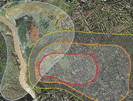
Barium Meals for the City force-fed
Traces of Fire, by Volkmar Klien & Ed Lear, starts with a pub-tour. "Couple of drinks, couple of cigarettes, off to the next bar...Next day, same thing...In each of the pubs we leave behind a nice silvery lighter...equipped with a nice little transmitter and its own transmission id. For several weeks we track the transmissions - tracing the lighters, tracing the fire, collecting the data; echo-soundings from within the urban habitat. Relaying times and locations to their observers, the lighters build an information model giving a sense of position and distribution--a presence in physical space. We toggle between information model and urban life. Logging data, tallying positions, extracting telling trends of behaviour. Reacting to the situations our roles as observers lead us into and pointing cameras in our specimens’ common grounds. Recording the soundscapes of places regularly passed...Marking encounters with inhabitants, handing out sparklers - capturing the moment for posterity. Recapturing the fire. Discovering traces left in an urban habitat we leave traces of our own."
Posted by jo at 09:10 AM
October 15, 2004
zaMob

South Africans can play too
What is zaMob? Simply put, zaMob is a South African flash mob. If you're interested in the idea of the flash mob, add your name to the zaMob database and one day you may recieve an e-mail to let you know about an upcoming flash mob in your area. What if my town is not in the list? E-mail the name of the town that you are in to zamob at webmail.co.za and your town will be considered for inclusion in the zaMob town list. Otherwise, sign-up under the town nearest to where you are.
Posted by jo at 01:43 PM
Mapping
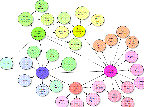
Alternative Categories
"In preparation for Wednesday's Urban Gaming lecture, we thought we'd make a map. We've mapped psychogeography, nomadic communication and technologically infused public space as enablers of the urban gaming explosion. Gaming is the perfect structure for experimenting with these new tools, places and communities. The dynamics between online and offline players, person and space, space and technology, person and technology are being stress tested and observed in the form of games in media labs, art collectives and companies throughout the world. And it's evolving to be a mechanism for social activism as well- so there you go!" From community-centric.
Posted by jo at 01:12 PM | Comments (1)
City of Heroes
Virtual Memorial
"City of Heroes players memorialize Christopher Reeve: Memorial vigil held by players of the online superhero MMORPG honors passing of the Man of Steel"; by Tim Surette--GameSpot; POSTED: 10/12/04 02:01 PM PST
After the news of the passing of Christopher Reeve hit the airwaves, players of the massively multiplayer online role-playing game City of Heroes gathered together for a memorial for the fallen hero. Players gathered in full hero garb and saluted in tandem in memory of the man best known for playing Superman on the big screen. Reeve, who became a champion of spinal cord research following a paralyzing horse riding accident in 1995, died Monday as a result of heart failure stemming from an infection related to his paralysis. He was 52 years old.
Posted by jo at 12:47 PM | Comments (0)
Love One Day

Time, Space, Love
'love one day' was a real one-off action through time and space, presented live online and later as a cinematic video installation. Two people from two distant parts of the UK started a long journey to London. They met in a hotel bedroom and within 24 hours of starting their journey, they left. 'love one day' explored the communication between two people whose anticipation of love was heightened by the unique circumstances of their journey. It documented the emotions, thoughts, observations and behaviour of two 'matched' individuals as they traveled towards each other and met one day. 'love one day' investigated psychological motivations, how we communicate and interact with others and how we are affected by our environment, space and time.
A unique 'love one day' dating website was created. This allowed people to submit their personal profile and browse/chat amongst other candidates looking for the perfect match during one month. The website took on a similar format to that used by online dating agencies with specific questions designed to recruit two protagonists for a journey to meet in London. 'love one day' was publicised and promoted through online listings, press and 'satellite venues' (public spaces and institutions supporting the project) as well as the website's established visitors and target audience.
Two people from a selection of 'matched' couples via the 'dating website', were interviewed and chosen to become the main protagonists of this experience. People prepared to accept the role of protagonist by embarking on an emotional and physical journey to meet someone they have never met in a hotel bedroom were sought. They were chosen on the basis that they made a good love match.
The two selected protagonists were each given a mobile phone to continue their communication by phone, in text and images so they could get to know one each other a little more before their journey started. No direct contact was allowed until they met for the first time in the hotel during filming. The entire journey was filmed and the telecommunications were documented live on the love one day website. The protagonists later met with a relationship psychologist to feedback about their experience.
'love one day' is a project of completely naked.
Posted by jo at 01:01 AM | Comments (0)
October 14, 2004
Liebst du mich Lump

Thoughts run through the net
In Beckett's "Waiting for Godot" nothing happens. Twice. During Beckett's "Liebst Du mich Lump" a lot of things happen. Simultaneously and in different places. The piece adresses the internet-public, only 8 spectators are permitted on location.
"Liebst du mich Lump" takes place in a labyrinthine theatrespace with the walls full of graffiti located in the heart of Berlin-Friedrichshain. But already the delicate, frail nervestream of a Sleeping Beauty in deep sleep, lying in the "skulpturalen Versuchsraum 2" of the "Deutschen Museum" in Munich can change the way the actors act. Thoughts run through the net, also from the internetcafe "Oraniennet" in Berlin- Kreuzberg 36. There, an ironmask is connected with a computer through which users can also manipulate the play with the vibration of their voices. A neuro-virtual "ménage a trois" is being created. Coincidence rules, speech dissolves to a mathematic formula, to oracular words which are put together every evening in a new way.
Opening night: October 19 -November 2, 2004 at 8 pm; Watch the Internetlivestream: www.beckett-pi.de; DSL/Windows.
Posted by jo at 05:15 PM | Comments (0)
iCinema

Immersive and Interactive Narrative
The iCinema Centre for Interactive Cinema Research, established in 2001, is a joint venture of the College of Fine Arts and the School of Computer Science and Engineering at the University of New South Wales, Sydney. It brings together researchers and postgraduate students in new media, digital cinema, digital aesthetics, film theory, multimedia design, computer science, artificial intelligence and software/hardware engineering.
The iCinema research program focuses on the research and development of a digitally expanded cinema. This includes all forms of the moving image, made visible on any type of screen or in any sort of immersive environment, whose structure is constituted by various methods of narrative coherence. The project is directed by Jeffrey Shaw and Dennis Del Favero.
The Centre has four principal research domains:
Immersive Visualization Systems: The exploration of immersive environments which provide for the collection, integration and display of visual, audio and kinesthetic data.
Distributed Interface Systems: The integration of interface systems with the experience of distributed spatial visualization environments.
Interactive Narrative Systems: The exploration of interactive narrative systems which provide the viewer with the ability to select and edit interaction with a set of visual narrative streams.
Theories of Interactive Digital Narrative Systems: The inquiry into theories of narrative and the organization of units of meaning and experience within the digital domain.
Posted by jo at 12:55 PM | Comments (0)
Enough is Enough
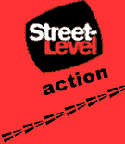
Message in a Matchbox
"A clever and daring under-ground movement has sprung up in Zimbabwe that is stoking public opinion against Robert Mugabe's government. Zvakwana - which means 'enough' in the Shona language - has launched a bold campaign expressed through graffiti, emails and condoms to encourage the Zimbabwean people to rise up...A black Z on a bright yellow handprint is appearing mysteriously on the walls of bus stations, on busy streets and over billboards across Harare and other cities. Thousands of 'revolutionary condoms' have been distributed, emblazoned with the letter Z and the double-entendre message 'Get up! Stand Up!'. Matchboxes stuffed with resistance messages are left in public places to be picked up by unsuspecting citizens. Thousands of Zimbabweans are led to the Zvakwana website."
Read full article. And this is a paper about mobile phones and civil society organisations in the developing world. (Thanks)
Posted by jo at 12:12 PM | Comments (0)
October 13, 2004
CITYchromosomes

Fixed Points Gathering Impressions
The Stadschromosmen (CITYchromosomes) project gathered thoughts and impressions of particular points around Antwerp and its districts that were shared via SMS. There were 25 ‘text points’, each inviting the submission of impressions about that place. After six months, a selection has been compiled into a booklet that combines the different ‘text points’ and gives an alternative view on Antwerp and its districts. The booklet (in Dutch) is available for download in PDF, plain text and a special version for iPods. By November 15, a complete English translation will also be available under the creative commons license.
"It’s been a fantastic, city-wide...event, put together against the odds and with very little support...by Stefan Kolgen and Ann Laenen of C.H.I.P.S, and including brilliant things like them spending a night turning all the city’s buses into Stadschromosomen text points and leading a walk with 200 recent immigrants round the city, asking them to text in their feelings about the landmarks of their new home town." FishArePeopleToo
STADSchromosomen is CityPoems’ sister project in Antwerp, Belgium, UNESCO's World Book Capital 2004. CityPoems and STADSchromosomen have 'twinned' matching locations in Leeds and Antwerp, to let you use your mobile phone to be in two cities at once.
Posted by jo at 03:05 PM | Comments (1)
Instant Mess
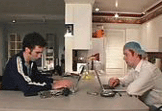
Mediated Conversation
Watch this Quicktime video.
via Red Ferret, reblogged by emily at textually.org
Posted by jo at 02:49 PM | Comments (0)
Receiver #11

Communication: fitter, happier and more productive
The new issue of receiver is out and has some good reads:
Adam Greenfield on designing with an appreciation for everyday life
Drew Hemment on technologies driven by forces other than economics
Erkki Huhtamo on the cultural history of mobile technologies
Barry Wellman on the importance of the individual in mobile communications
Posted by Anne Galloway on purse lips square jaw, October 13, 2004
Posted by jo at 11:32 AM | Comments (0)
Cinéma
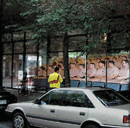
Shuttled Between Worlds
Cinéma is a multi-artist, cross-disciplinary performance presented in a storefront, converted into a theatre which looks out onto an urban streetscape. The audience inside this theatre watches and listens to video and sound elements while live performance takes place on the street outside. Narrative elements in Cinéma are in both French and English. Cinéma opens with texts which deal with the nature of the first word, the dominance of the ‘cinematic eye’ in our experience of the world, and the fragility of the human body. The myth of Orpheus and Eurydice, with its shuttle across the transitional space between the worlds of the living and the dead, is used as a structuring device for the piece.
Cinéma will be presented at SAT (Society for Art and Technology/La Societé des arts technologiques), 1195 rue Saint-laurent, Montréal [between René-Levesque et Sainte-Catherine - métro: Saint-Laurent]; October 12-15, 2004 at 8pm. During the day visitors can sit in the theatre observing the street while listening to an audio piece in which fragments of the performance soundtrack are adapted as an installation.
Thematically, the use of the myth is of interest in examining the very contemporary problem of the ability of art to influence the unfolding of events. What is the use of art in the face of political and social conditions which appear to be beyond our control? Can art create a window onto invisible forces which seem to control our lives? Can it open a process which allows us to approach spiritual and existential questions without falling into romantic clichés? In short, what is the potential relevance of art beyond its contemporary relegation to the role of diversion and entertainment?
Music: Rainer Wiens
Texts: Shauna Beharry, Andrew Forster
with: Monique Romeiko, Robert Schweitzer, Solomón Díaz, Michael Fernandes, Nathalie Claude
Posted by jo at 09:33 AM | Comments (0)
October 12, 2004
CatchBob!

Locating Collaboration
CatchBob! is an experimental platform in the form of a mobile game for running psychological experiments. Running on a mobile device (iPAQ, TabletPc), it's a collaborative hunt in which groups of three persons have to find and circle a virtual object on our campus. CatchBob! will test how a location awareness tool modifies group interactions and communications, the way they perform a joint task as well as how they rely on this spatial information to coordinate. Series of experiments will be run to determine how location awareness impacts group collaboration. Read "Impacts of Location-Awareness on Group Collaboration" [PDF] position paper.
Via Emily at smartmobs
Posted by jo at 02:52 PM | Comments (0)
Glimmer
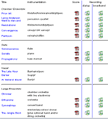
Scores of Light
Glimmer, by Jason Freeman, engages the concert audience as musical collaborators who do not just listen to the performance but actively shape it. Each audience member is given a battery-operated light stick which he or she turns on and off over the course of the piece. Computer software analyzes live video of the audience and sends instructions to each musician via multi-colored lights mounted on each player’s stand. The piece draws from a long history of interactive music, art, and cinema, but it also engages in current issues regarding the use of technology within orchestral concerts. Many orchestras are currently experimenting with interactive handheld devices and large video displays which attempt to explain the music being performed. But many such devices ultimately create barriers to engaged listening. Glimmer challenges audiences to become active collaborators in the live performance, rather than reinforcing their traditionally passive role. The American Composers Orchestra will perform Glimmer in its world premiere on Friday, January 21st, 2005, 7:30 p.m. at Zankel Hall at Carnegie Hall (New York).
The audience is divided into seven groups, each of which is linked to a group of three or four musicians in the orchestra. The percentage of audience members in a group with their light sticks turned on directly affects the dynamics, timbre, and tempo of the corresponding group of musicians. Additionally, a comparative analysis of audience groups regulates pitch choices, texture, and the overall prominence of each group within the orchestra. The more an audience group changes its lights, the more varied and prominent the music played by the corresponding musicians.
Musicians do not perform from a linear score in conventional musical notation. Instead, they respond to the light on their stand according to a series of instructions printed in their part. Different color families indicate which notes to play, the brightness of those colors indicate dynamics, and pulsations and flashes indicate rhythm and accents. Each player’s light is independently controlled directly by computer software. There is no conductor.
Glimmer is realized using off-the-shelf video equipment, DMX-controlled LED lighting, novelty battery-operated light sticks, and custom computer software written for Cycling ‘74’s Max/MSP/Jitter environment.
Glimmer was commissioned by the American Composers Orchestra, Steven Sloane, music director, Robert Beaser, artistic director, Dennis Russell Davies, conductor laureate.
Posted by jo at 09:37 AM | Comments (0)
October 11, 2004
Auracle
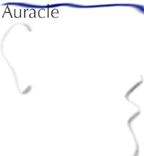
A Networked Instrument
Auracle, a voice-controlled, networked instrument on the Internet, was created over the past year at Akademie Schloss Solitude in Germany by the Auracle team (Max Neuhaus, Phil Burk, Sekhar Ramakrishnan, Kristjan Varnik, David Birchfield, and Jason Freeman--read PDF). The project is inspired by Max Neuhaus' interactive radio works from the 1960s and 1970s.
The site is now live, and you can try out Auracle at any time (you'll need a computer with a microphone). The official launch event is Friday, October 15th at Donnaueschinger Musiktage, a new music festival in Southern Germany. You are welcome to join in via the Internet by using Auracle at 2:30 p.m. Eastern Standard Time this Friday; see the web site for details.
Auracle is a networked sound instrument, controlled by the voice. It is played and heard over the Internet. To participate, simply launch Auracle in your web browser, join an ensemble, and create sounds with other participants in real time. While it takes years to learn how to control an instrument such as guitar or piano, Auracle requires no special training to play. It takes advantage of the sophisticated and flexible vocal control we all have from our ability to speak.
Your voice, however, is not the source of Auracle's sounds — it is merely a way of controlling those sounds. You play Auracle with other people anywhere in the world in groups of up to five players called Ensembles. All members of an ensemble are able to hear each other's gestures. Listen to the active ensembles in Auracle by clicking on their names. Stay with a group that you like, or create a new ensemble yourself and invite others to come and play.
Auracle is an instrument, not a piece; it is a system, not a musical composition. It has an internal structure, but it does not define or control the interaction of its participants. The architecture itself adapts over time in response to how it is used.
Posted by jo at 02:58 PM | Comments (0)
Platfrom

Routed Narratives
Platfrom, by Rachel Baker, uses the platform of the mobile phone within a very specific context - the train journey. A series of playful SMS messaging scenarios will make a relation between mobile phone and rail network as communication systems. Focusing on privatised, proprietary networks -the railway and the mobile phone -the project will invert them into opportunities for public and group interaction. It offers moments for train culture and SMS culture to integrate, taking advantage of a journey's incidental nature (delays etc.) with unknown consequences by creating a common gateway between train traveller and static web user and including them both in a narrative along a particular route. The narrative at this stage is dictated by the route from South to North and the contiguous cities and landscape. Read more [PDF]. Also read an essay by Matt Locke.
Posted by jo at 11:52 AM | Comments (0)
Human Ethernet
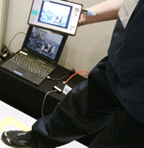
Streaming the Body
NTT demoed their human body data transmission technology at CEATEC JAPAN 2004. The technology detects weak electric fields in a human body by using an optical electric field sensor and provides the data communication speed of about 10Mbps (much faster than 3.7Kbps, the speed Matsushita Electric Works' technology enables.) The system also uses the TCP/IP protocol, making a human body equivalent to 10Mbps ethernet. However, unlike Matsushita's technology that is ready for commercial use, NTT's technology may need some work before it can be commercialized.
It works as follows: You step on a copper platform containing a server computer and hold a computing device, then data are sent from the server through your body to the computing device. For example, you can view streaming video transmitted through you body on your handheld device.
Via RFID in Japan < IT Media. Reblogged by Regine from we make money not art
Posted by jo at 11:06 AM | Comments (0)
October 10, 2004
The (in)security Camera
![insecurity_image[1].gif](http://www.turbulence.org/blog/images/insecurity_image[1].gif)
Watching Me Watching You
The (in)security camera is an installation created last year by Benjamin Chang, Silvia Ruzanka and Dmitry Strakovsky. The robotic surveillance camera relies on an advanced computer-vision software to track, zoom, and follow subjects walking through its field of view. Deploying sophisticated AI algorithms used by the security forces, it can assess threat levels in real time and respond accordingly.
However, the camera is, in fact, a little insecure. Easily startled by sudden movements, it is shy around strangers and tends to avoid direct eye contact. This reversal of the relationship between the surveillance system and its subjects gives the machine an element of human personality and fallibility that is by turns endearing, tragic, and slightly disturbing.
Originally from Linkfilter; reblogged by Regine at near near future
Posted by jo at 06:36 PM | Comments (0)
October 09, 2004
Distance Focale (Focal Distance)

Making the Virtual Real
Focal Distance is a performance cycle device where users are invited to move avatars on a grid. These actions are reproduced in a physical space by a human operator moving objects on a table. Global input provided by participants is considered a material feeding sub-device that produces various media streams. There is an ongoing discussion (in english) about this concept and some resources (images + texts mostly in french) at www.x-arn.org.
Posted by jo at 01:41 PM | Comments (0)
Warehouse Operation - v.beta.

Actions Reseaux Numeriques
Combining human and technical possibilities, the hypermedia project Warehouse Operation (GDS) by Actions Reseaux Numeriques focused on building a warehouse of various objects and materials. The technical and human possibilities, consisting of a link to a website and a warehouse established in a concrete physical space, provided the opportunity to 'enter the warehouse--with the help of the link--and see the objects it contained.
The communication mechanism was based on the circulation of commands and responses between the users and operators. Users communicated with operators--who were physically located in the warehouse--on the internet. Users sent in their orders and the operators performed responses, thereby transforming the link.
The process consisted of a sequence of specific actions, whose beginning and order the user indicates to the operator in the warehouse:
* selecting objects and taking them out of the warehouse
* transferring them to a separate zone and creating an identification document
* exhibiting and general identification
* placing them back to the warehouse.
In a separate zone a document representing the object, generally accessible with the help of the link, is presented. Any user can attribute to the observed object a meaning that he considers the most appropriate, or can present rational or imagination-based assessments and in this way create the general memory of the warehouse objects.
In this way a link between the digital and physical reality is established. The developing relation between these two forms of being makes one to take a new look at the mutual relations of humans/machines and the perception of the net-generated reality.
# Laurent Neyssensas: implementation of the project
# Yann Le Guennec: modelling/programming
# Sylvie Bourguet: project manager responsible for the conception
For more info on this project, see http://www.x-arn.org/y/wakka.php?wiki=GestionDesStocks (in French).
Posted by jo at 01:21 PM | Comments (0)
Glowlab
![]()
a hub for public-space arts
Glowlab is a Brooklyn-based arts lab exploring the nature of urban public space. We produce, document and present multi-media work in psychogeography and public-space arts. We organize events, lectures, collaborative projects and exhibitions, and maintain an online lab at www.glowlab.com. Glowlab is particularly interested in the idea of public space as a creative medium, and we offer the Glowlab website as an online studio/playground where artists and the public can connect and learn.
Glowlab is a highly collaborative venture, and we believe the most exciting work develops when multiple viewpoints are explored. The Glowlab community encourages dialogue on issues ranging from the impact of mobile technologies on urban life to the application of open-source concepts in art production. Whether the approach is political, philosophical or artistic, all those involved with Glowlab share a passion for the creative investigation of the urban landscape. Because our work deals specifically with physical space, we offer a number of offline events to bring our community together. In May 2003 Glowlab produced the first annual psy.geo.CONFLUX, a festival and conference in New York dedicated to current artistic and social investigations in psychogeography, held at community art and activist center ABC No Rio. In May 2004, the second annual Conflux took place at PARTICIPANT INC on the Lower East Side. The event grew to include over 50 artists from around the world who engaged in a wide variety of public-space projects, lectures, performances and audio events over the course of four days. Details about the Conflux can be found at: www.psygeocon.org.
Mission
Glowlab supports the evolution of contemporary psychogeography and serves as a hub for public-space arts. Psychogeography is an open and highly experimental discipline concerned with the ways in which the geographic environment affects emotions and behavior. The Situationists first coined the term psychogeography in the 1950s. They explored the city by engaging in “dérives” or observational drifts with the intention of discovering new perspectives on urban life. Current approaches to psychogeography vary, and include artistic, political, philosophical and scientific work in fields ranging from archaeology and cartography to programming, performance and street art. Glowlab is particularly interested in the psychogeographic elements of contemporary public-space art, including performance, documentary work, film/video and urban research. We aim to bring together these diverse perspectives and engage in dialogue on the evolving methods and practice of psychogeography. To that end, we offer both an online community, in the form of the Glowlab website, and an offline presence in the production of a number of projects and events including experimental walks, a monthly salon and a four-day festival in New York.
Posted by jo at 12:55 PM | Comments (0)
October 08, 2004
Moon Radio

Mooning You 24-7
Moon Radio is now previewing their MyTV prototype, a programme of live, broadcast events that provide an opportunity for artists, producers and the Moon Radio community to plug-in a camera, choose a time and broadcast live to a worldwide audience 24-7.
MyTV will be launched online later in 2004. Until then, these performances will be archived and available for viewing at Moon Radio. Moon Radio webTV is a web streaming channel hosting live broadcasts, an archive of diverse films, documented live events, and an active online community of artists, filmmakers, content producers and regular viewers. It began in 2000 as an audio and video web streaming channel for artists to explore live web streaming technology. The project commissioned artists and hosted live events both online and in arts venues around the UK. Moon Radio webTV has developed to focus on building tools for the Moon Radio community. These include hosted forums, profiles of community members, and text messaging services.
Posted by jo at 09:10 AM | Comments (0)
flow

It's the Moment of Connection
Researching the early history of telematic art, I came across an interview with Robert Adrian by Jeremy Taylor, the Digital Archivist working on contract at Open Space.
Adrian is a Canadian artist based in Vienna who began work in telecommunications in the late '70s. In 1982 he designed his first major telecommunications art project, "The World in 24 Hours," a global multimedia linkup involving 24 cities and using fax, email, and slow scan-video where it was available. Adrian defines telematic arts as "art (or artworks) that exist(s) at least partly in more than one place at the same time and/or within the space of a communications network."
What particularly struck my attention were the three things Adrian thought important to remember about producing interesting telematic or network art:
1) The fact that nothing is permanent in network art. The moment of connection, where the work really happens, is dependent on the machines being turned on. When the machines are off the work is gone--and even worse, the machines and software upon which the work depends will probably no longer exist within 5 years of the creation of the work.
2) The work exists at the point of connection--with the receiver. It is always very hard to remember that not only can you not control the way your work is received but it is actually undesirable to want to exert control. This demands a completely different attitude than we know from industrial art practice. Perhaps it can best be described as "flow" rather than "process"--the creation of the space where things or objects may exist or happen rather than the making of things or objects themselves.
3) Like Mail-Art, the only really interesting thing about Network Art is that everybody is an author or potential author. There is no obligation to reply but the question is open and the means are available. The art industry is trying very hard to establish "artistic criteria" in order to exclude the riff-raff but so far without much success...luckily.
I put this out as a reply from one of the pioneers of telematic art to Liza Sabater's post on Rhizome Raw, reproduced on this blog 10/5/04: Art: Object or Process?.
Posted by newradio at 08:45 AM | Comments (1)
IMPLEMENTATION
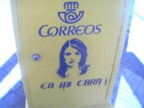
Distributed Serial Novel
Implementation is a novel about psychological warfare, American imperialism, sex, terror, identity, and the idea of place, a project that borrows from the traditions of net.art, mail art, sticker art, conceptual art, situationist theater, serial fiction, and guerilla viral marketing. The text is being written collaboratively by Nick Montfort and Scott Rettberg with some contributions from others. Its initial incarnation is as a serial novel printed on sheets of stickers that are being distributed in monthly installments.
"We will distribute these sheets to individuals, both personally and via post...We will deploy Implementation internationally and work to bring it into unusual geographical and cultural contexts. We will encourage the translation of texts into other languages and will host any translations that are done on the project website."
Posted by jo at 08:27 AM | Comments (0)
October 07, 2004
Art's Birthday
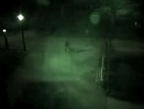
Scrambled Bites
An Experimental Data Visualization for Art's Birthday; Saturday, January 17th, 2004, 8PM- midnight (Visible from the OSU oval while facing Hopkins Hall)
Matthew Lewis and Daniel Jolliffe present their contribution to the Art's Birthday celebration, an annual event to celebrate the presence of art in our lives first proposed in 1963 by French artist Robert Filliou. Taking part in the Scrambled Bites data exchange project, we will work with data fed over the Internet from specially designed sculptures, devices and sensors made by artists in Australia, Japan, Canada and Austria. From Ohio, we will be sending to the other artists data representing activity in front of Hopkins, as well as the number and strength of GPS satellites in orbit over our location. This mass of data sources will be visualized in a video projection visible from the outside of Hopkins. Part visualization, part data modeling experiment, the resultant projection is a composite image of activity across the network and closer to home." Coordinated by the Vancouver-based Western Front artist centre.
Posted by jo at 07:13 PM | Comments (0)
News Reader, by Noah Wardrip-Fruin, David Durand, Brion Moss, and Elaine Froehlich

Playing the Daily News
News Reader, the second of two textual instruments commissioned by Turbulence, is software for reading and playing the network news environment. Initially, it offers the current "top stories" from Yahoo! News which are always drawn from mainstream sources. Playing these stories brings forth texts generated from alternative press stories, portions of which are introduced (through interaction) into the starting texts, gradually altering them. "News Reader" is an artwork designed for daily use, providing a sometimes humorous, sometimes disturbing experience of our news and the chains of language that run through it.
"Two Textual Instruments: Regime Change and News Reader" is a 2003 commission of New Radio and Performing Arts, (aka Ether-Ore) for its Turbulence web site. It was made possible with funding from the LEF Foundation.
Posted by jo at 06:37 PM | Comments (0)
The Wireless Invisible

Sound Tracks and Data Footprints
"Stalking the footfalls and echoes of the wireless invisible" by Tobias C. van Veen, Horizonzero, Issue 15: New Movements in Digital Music
When what is "useful" is defined in terms of its market, when GPS directions lead to the nearest McDonald's, then wireless art becomes yet another pervasive intrusion, a one-way dictation. The ephemeral terrain of wireless art in all its forms is a floating, multicast struggle where the century old battles of radio are being re-played out. Yet - this time with Open Source software and technologies; with artist-driven hardware development; with a programmer's technique and a hacker's verve; and, like a hive, with a collective approach to anticipating the enemy's moves on the global level. This machine aims to engage the participant in the game: encouraging the step of becoming a content-creator rather than just a passive receptor, disrupting the sender/receiver of communication, the fortress of static/noise, of what defines efficiency and usability. The target of producing ever new and publicly-oriented ways of engaging life through the tendrils of technology is in sight. This disruptive yet productive desire has been a persistent dream since the avant-garde encountered radio one hundred years ago. Read article.
Posted by jo at 08:36 AM | Comments (1)
October 06, 2004
Untitled 2002 (he promised)
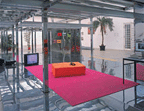
Permeability of Domestic Space
Rirkrit Tiravanija's Untitled 2002 (he promised), is a platform for improvisation and interaction. Rendered in highly reflective stainless steel and chrome, its structure was inspired by R. M. Schindler's residence in West Hollywood (1921–22), which exemplifies the architect's interest in the permeability of domestic space and how it is enlivened by its surrounding context. First exhibited at the Vienna Secession for a period of two months (July 1–September 5, 2002), this large-scale installation was conceived as an arena, a nexus for a series of artistic, public, and private activities—effectively blurring the boundaries that customarily separate them. From the barbecue on opening night to Thai massages, DJ sessions, film programs, and panel discussions, Untitled 2002 (he promised) embodied the experiential nature of Tiravanija's art, which requires the active participation of the viewer in order to be fully realized. Tiravanija is a catalyst and a gracious host, inviting the public to enter into and literally engage with his work. He provides the parameters but never dictates the outcome. The extended run of the show in Vienna allowed the work to become a central, albeit temporary, part of the community, where the ebb and flow of the social could occur. Art and life intersected in a milieu of pleasure and provocation. Four days at the Guggenheim: October 8-11, 2004.
Posted by jo at 03:16 PM | Comments (0)
goodbye "performance"
In an October 1, 2004 New York Times review of a show, Don't Call it Performance, at the Museo del Barrio, New York, we learn that the term "performance" has been challenged by no less an authority than performance artist Vito Acconci.
Where were you, Mr. Acconci, when we initiated this blog with the What is___? questions:
"What is Performance? performance? performative? And within that discussion, what is authorship, interaction, participation?"
Acconci holds that performance is a theater term. And that new work differs from professional theater by being 1) unscripted for the most part; 2) non-oral-- the body is the predominant mode of expression--and 3) played out in real time. It also has a different relation to its audience, in that it "tries for a relationship with the viewer that is more direct and spontaneous [and] meant for less structured spaces than stages, silver screens and museums."
"Performative" is Acconci's word of choice.
Posted by newradio at 02:37 PM | Comments (0)
Organised Sound: An International Journal of Music and Technology

Networked Music
Interconnection has always been a fundamental principle of music, prompting experimental artists to explore the implications of linking their computers together long before the Internet reached the public consciousness. As the Internet achieved critical mass over the past decade, networking technology took centre stage as the key to a vast new territory of possibility, facilitating remote participation, distributed processing, and redefinition of musical space and time. The Web emerged as a virtual venue for countless musical purposes, and as analog acoustics transformed to digital representations, packets of data carried by IP from one address to another became a modern metaphor for air molecules transmitting the tone of vibrating body to eardrum.
As with any new technology, applications of networking to music have evolved from naïve proofs-of-concept to more sophisticated projects, and we stand now at a point when 'internetworking' is taken for granted, novelty is expiring and artistic goals more often transcend technical considerations. From this vantage, the essential question is not how networking and music are combined, but why. What is the unique experience that can be created? Whose role can be empowered or transformed: composer, performer, audience? Where can sound come alive that it couldn't otherwise? Networked music can reinterpret traditional perspectives on stagecraft, ensemble, improvisation, instrumentation, and collaboration, or enable otherwise impractical relationships between controllers, sensors, processors, inputs, and outputs. The network can be an interface, a medium, an amplifier, a microphone, a mirror, a conduit, a cloud, or a heartbeat.
The network is all of us. Music is the sound we make. Listen...
Call for Articles and Works
Volume 10, Number 3
Issue thematic title: Networked Music
Date of Publication: December 2005
Publishers: Cambridge University Press
We invite submissions from composers, performers, artists and researchers working in the realm of digital media and sound. Submissions related to the theme are encouraged; however, those that fall outside the scope of this theme are always welcome.
Issue Co-ordinators: Margaret Schedel [gem at schedel.net] and John P. Young [sound at netmuse.org]. This issue is being prepared in collaboration with the International Computer Music Association (ICMA).
The theme represents many avenues for discussion including, but not limited to:
Networked control interfaces (hardware/software)
Sensor arrays/interaction
Distributed/remote participation (composition, performance, reception)
Broadcasting/multicasting/streaming media
Virtual musical environments/venues
Aesthetics/philosophy of musical interconnection
Web-based music projects
OpenSoundControl
Distance learning/education
Online collaboration
Networked data sonification
Real-time remote sensing
Distributed processing
Networking for fault tolerance
Musical avatars/agents/bots
Emergent network phenomena/effects/behavior
Neural networks
Internet2
Alternative musical networks (RF, MIDI, WiFi, Bluetooth, etc.)
Strategies for mitigating network limitations (bandwidth, latency, etc.)
This issue continues the annual partnership between Organised Sound and the International Computer Music Association, with previous themes including "Performing with Technology" and "Collaboration and Intermedia." In exploring these prior areas, networking has emerged as a common element underlying a wide variety of innovative projects, prompting a more focused look at the mutual influence between networks and music. This should be no surprise in the electroacoustic field, where our machines are partners as much as tools, and working with other artists or often even solo requires connection between multiple machines. In the pre-network era, technical obstacles frequently dictated that much computer music occurred in relative isolation, with musicians expending precious attention acting as interpreters between hardware and other humans. So in one sense, networked music can be simply a recapitulation of acoustic music principles, of listening and sensitivity to other performers and audience, by enabling computers to participate equally in the musical conversation. Networking can also radically alter these traditional principles, most obviously by decoupling the spatial framework, enabling some or all of the participants to act and perceive without being physically present. Thus networked music is fertile territory for the composers, performers, and researchers that comprise the ICMA as both a potential means of overcoming challenging limitations of technology, as well as presenting new possibilities we have yet to imagine.
Submissions may consist of papers, with optional supporting short compositions or excerpts, audio-visual documentation of performances and/or other aspects related to your submission. Supporting audio and audio-visual material will be presented as art of the journal's annual DVD-ROM which will appear with issue 10/3. Related discussion will be located on the ICMA Array website, and additional multimedia at Organised Sound's Cambridge University Press website.
SUBMISSION DEADLINE: 1 March 2005
SUBMISSION FORMAT
Notes for Contributors and further details can be obtained from the inside back cover of published issues of Organised Sound or from:
http://uk.cambridge.org/journals/oso/
Email submissions should be sent to (please see SUBMISSION FORMAT above): os at dmu.ac.uk
Hard copy of articles (only when requested) and other material (e.g., images, sound and audio-visual files, etc.) should be submitted to:
Prof. Leigh Landy
Organised Sound
Clephan Building
De Montfort University
Leicester LE1 9BH, UK.
Editor: Leigh Landy
Associate Editors: Ross Kirk and Richard Orton
Regional Editors: Joel Chadabe, Kenneth Fields, Eduardo Miranda, Jøran
Rudi, Barry Truax, Ian Whalley, David Worrall
ICMA Representative: Mary Simoni
International Editorial Board: Marc Battier, Laurant Bayle, Hannah Bosma, Allesandro Cipriani, Simon Emmerson, Rajmil Fischman, David Howard, Rosemary Mountain, Tony Myatt, Jean-Claude Risset, Francis Rumsey
Posted by jo at 09:27 AM | Comments (0)
October 05, 2004
The Temporary Travel Office

non-rational connections
The Temporary Travel Office produces a variety of services relating to tourism and technology aimed at exploring the non-rational connections existing between public and private spaces.
How is corporate biotechnology shaping the spaces we live in? The Travel Office's tour of the Chicago Technology Park is a guided audio experience that places the city's current investment in the "new economy" within the historical, and ongoing, practices of social engineering through urban planning. A story of spatial eugenics emerges out of the juxtaposition of texts and statements from disparate sources that include Official state and city press releases, corporate documents and activist archives. Neither the Travel Office nor this tour represent the Chicago Technology Park, the Illinois Medical District Commission, or any affiliated government or private entities. [left: A Travel Office representative conducting a walking tour of the CTP] [sampled audio of Chicago Transit system from www.chicago-L.org]
Posted by jo at 02:59 PM | Comments (1)
Thinking of art, transparency and social technology
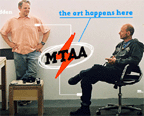
Art. Object or Process?
From Liza Sabater's post on Rhizome Raw today:
"There are different concepts in our work, like when you think of the computer tree, which is basically a stage that we built for people online to perform on, it's trying to figure out a different audience relationship. A lot of what net art is interested in is the communication back and forth, the net being the space in-between, so the printer tree in some ways is also the space in-between. With this tree, it’s audience, and some of the other things we’ve done is trying to separate and move that relationship between performance and viewer just slightly so that the relationship becomes a little fuzzier. I don’t know if people need to know that when they see the piece to understand the relationship." [M. River]
"But let me bring another issue to the table, one I think other net creatives have brought to light pretty well. It's the issue of TRANSPARENCY.
Artists have always kept notes, some way or another, for their ideas and process. But it is not until they are dead (or made an offer they cannot refuse) that people can take a peek at them. If ever. But not just artist as in Art makers. Most people involved in creative work will keep some kind of record of their discoveries and obstacles. The problem, again, is that these are mostly kept tucked away in private libraries or bedroom drawers.
I believe it is time for net artists to stop pretending anybody beyond their immediate peers understand what they are doing. Seriously. Not even the people in most arts organizations (I'm thinking granting institutions and the like) understand the difference between creating your own metasoftware in Java so you can create software art versus a person who gets their hands on Flash and makes an animation. To this day I find myself saying at art openings, "No, that Levin/Simon/Napier is not an animation. It's software creating the art." To which they most inevitably get the "deer in the headlights" look on their faces. Ugh.
MTAA was interviewed for Petit Mort and it's worth the reading (great pics of the sexy beasts and a fantabulous one of EndNode AKA Printer Tree). This is the part that mostly caught my attention:
“Q: I’ve notice that your updating of art is similar to the way corporations are updating their services these days; for example banks make you transfer funds, make you fill out forms, make you find customer service, and sometimes even make you responsible for their quality control. Technology now a day has passed on a lot of duties to the customer. It has really become a self-service type of system. And although this would seem like cost cutting measures on the way they do business, we still don't see a decrease in their fees or cost of their products or services. It is helping them save money I’m sure, but as consumer we are loosing our time in performing their services. Is that shift what you had in mind when you started these updates?
TIM: We never spoke about it, but I definitely considered that being a change in the way the people interact online -a lot of the labor has been passed back to you.
MARK: There are different concepts in our work, like when you think of the computer tree, which is basically a stage that we built for people online to perform on, it's trying to figure out a different audience relationship. A lot of what net art is interested in is the communication back and forth, the net being the space in-between, so the printer tree in some ways is also the space in-between. With this tree, it’s audience, and some of the other things we’ve done is trying to separate and move that relationship between performance and viewer just slightly so that the relationship becomes a little fuzzier. I don’t know if people need to know that when they see the piece to understand the relationship.”
[The whole article is at Petite Mort]
This is an AMAZING insight. For one, I feel that one of the interesting failures of net art has been its inability to communicate OUTSIDE of its immediate clique. Not even people in the art world know or have even heard of net art/software art as we discuss it here in Rhizome. To most people NA/SA is what happens when you photoshop photography or make a video and put it on the net.
So without even knowing it, MTAA has hit it over the head. For the one part, the technology used in net/software art--from the computers to the software or even the coding language--passes unto you the onus of R&D, QA, and usability (we're not even touching cost). The technologies of canvases, stretchers, brushes, pigments, hammers and nails do not need any of those added costs to the process of art making. It's completely the opposite with anything involving digital technology.
This is apparent with computers and software but what about the other art "corporations"?
Think of the museum, the gallery, the academy, the audience and "the market" as corporations as well. If you buy into the belief that art is about the object and not the process, then a lot of the onus of making an art "object" out of what is basically electricity, falls unto you as well. So you find yourself in a situation in which you've just built from the ground up a meta-software that makes more software that is then what we call "software art", but nobody--not even your peers--know about it because you've been focused on showing the final object and not the process. And because you've spent all that time on the art as object motif, your work--because it moves on a screen--is still being seen by the audience immediately outside of the net/software art clique as animation or video because, you know, it moves. You can't blame them. If you do not distinguish what you do from the "proven" art forms, why should people understand what your work is about?
Net Artists have been so caught up in the metaphor of the internet as a space for communication and social interaction that, ironically, most have not really used it as so in their own art spaces. Yes, there is Rhizome and all those artsy lists. But you cannot bring Rhizome Raw into your site and this is what each and every one of you should be doing. Let the flaming begin. There, I have said it.
I truly believe that focusing on the conversations your art and art process can create is the only way to not just push your work forward, but to bring to light the artform you so lovingly/madly/cluelessly pursue.
The net is not just a space, and the web is not just a canvas. They are processes as well. They are because humans use them. Art Websites should not be just galleries or studios. They need to be salons as well; places where each artist can reveal their work and play, their expertise and discoveries, their trials and tribulations.
Yes people, I'm talking about the four letter words. Whether it is a wiki or a blog, I am talking about bringing social technologies into artists sites. And not just the tech but the practices of communication as well. We need to make your sites as dynamic as your art process. Why? By not doing it you are missing out on the opportunity of connecting with peers in other net cultures who, may not be artists but have the answers to your questions. Or you may miss the opportunity of having one more piece of information ready and available for your future audience to read and learn more about you and your process as an artist. Or who knows what other things are in store.
It's been almost two years now since I wrote an art proposal, and quite frankly, I don't miss it. Those things are ghastly especially because software art, being a subset of a subset of art in most foundations, never fits all the requirements for documentation. So they want a video or slides of Shredder (I kid you not). In part because they are working with old paradigms of art, and in part because they most of the time do not have the "right browser" or the "right OS" or the "right hardware" to run most net/software art in the first place. So they go with what they think will be easy for them to use to judge the work--misunderstandings and hilarity ensues. UGH.
I've blogmothered potatoland.blog. The intention? For the Head Potato to post some code and start conversations around it. Rant against the machines. Maybe even get some people to work out a bug or two. That sort of thing. I'm even fixing to have guest writers write about their favorite pieces. And in due time to raise resources for new projects.
I'd love to try this experiment with more people. Be part of real-life conversations started by artworks, but mediated through the blogs. See what opportunities are opened up with this "new" socialization. Find out what happens when an artist's site goes from portfolio to notebook to salon, all in one swoop of technology."
Posted by jo at 01:26 PM | Comments (0)
Life: a User's Manual, Part 2

Inhabiting Image Spaces
Commissioned by and currently on exhibit at Impakt Online, Life: a User's Manual locates the city of Utrecht as its game board, where every story, every piece stands on its own, but is part of an intricate jigsaw puzzle. Both public physical spaces and private interior spaces contain traces of fragmentary personal [hi]stories tied together by an invisible network of media. How people inhabit the hidden 'image spaces', discovered by a wireless surveillance camera scanner, while at the same time inhabiting physical outdoor spaces, was revealed through the daily practice of walking during the Impakt Festival 2003. The findings of Michelle Teran's walks have been arranged on a map of Utrecht's secret transmissions.
Life a User's Manual is a series of walking performances taking place in different cities (see an earlier post on this site), based around the activity of tapping into the unencrypted transmissions of wireless security cameras using a 2.4 Ghz receiver. In a search for the hidden stories within the city, a walk through the urban streets reveals an invisible network of watched spaces. The unencrypted signal from the camera leaks into public space, making it easily viewable from the street. This puts us in an interesting moment of uncertain inhabitation, of being in two spaces at once.
A tiny fraction of the spectrum of the airwaves has been allocated for public use, as if space and the air are not public already. Taking advantage of this unlicensed part of the spectrum, we have seen an increased used of wireless devices that are all fighting for use of this narrow band. Use of wireless [wifi] networks, cordless phones, bluetooth, and wireless cameras transmitting on this frequency contributes to an already existing invisible world of electromagnetic fields and frequencies that saturate our bodies on a daily basis. It becomes impossible to separate our bodies from the traffic reports, surveillance video, phone calls and pop songs of others. We wear each other's information.
Posted by jo at 11:10 AM | Comments (0)
October 04, 2004
Practice
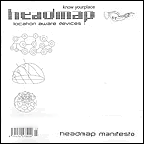
steps beyond the obvious
Esther Polak (Waag Society NL) and Leva Auzina (RIXC, LV) went some way towards rescuing landscape painting. They followed the driver of a milk truck through rural Latvia. He went through his daily routine of collecting up small amounts of milk from local people along a fixed route (in space and roughly in time). They traced the route using GPS units and software from the Realtime Amsterdam (and Riga) project. They took pictures, spoke to the people they met, and recorded interviews. In the end the GPS traces were inadequate. They had to sit down with the driver at the end of the journey with a map and pieces of paper and have him work through the broken traces with a pencil to produce a usable map of the route.
The result of the process was a very different view than photos, or interviews conventionaly produce. They had the drivers route, and maps, and time, and location to anchor point of view differently. They had misty pictures of people carrying milk churns through the countryside. But they also had a rich anchor for the systemic, subjective and spatial context; and more explicit than a literary or filmic narrative conventionally works with. The maps were generated by the people. Both implicitly, and explicitly as the man made sense of the journey he followed (six days a week) with a pencil, and a paper map, and GPS trace fragments.
The follow up thoughts were to trace the milk the next step of the way to the people who ended up drinking it (or consuming it processed into food). This opened up the idea of being able to trace what you consume or produce, right to producer or consumer. And further, open a dialogue between the participants in this cycle of production, distribution and consumption.
From an artists perspective it is now possible to (relatively easily) location stamp digital art work. The place where a work was made, or to which it refers can be logged using GPS for example. Work can be explicitly associated with a place digitally, and then 'found' according to spatial criteria: 'show me all the work associated with this place'. In mobile device terms, work can be accessed actually at a place predetermined by the artist or by the search criteria of the accessor.
How this is interpreted (conceptually and technologically) is up to artists, tool makers, and users.
Filmmakers for example can trace the spatial movements of the camera. Authors can place the next chapter at a new location. Musicians can spontaneously choose a location to perform and generate the audience through a combination of mapping and communications. Festivals, warehouse parties and rave variants have been working on these ideas for many years now, transforming dislocated spaces into gatherings though a disparate range of media.
In Karosta an audience of local people and workshop participants was led out in the dark through the woods to a clearing marked out by a circle of candles where Cheryl L'Hirondelle Waynohtêw was singing. Some way through, the audience (also singing) moved the circle of candles in closer, to make a smaller stage. The candles hinted at location aware, networked lights. You could have a lightweight portable stage that could be followed around, found and mapped on the net. Temporary, portable, visible (both visually and electronically), and findable architectural elements that would fit into a backpack.
Orientating usually requires a conversation with people who know where they are already. These conversations often serve to challenge the inhabitants of a place as to what their place means. Pete Gomes [Parkbench TV, UK] and Gabriel Lopez Shaw [US] found a group of local russian kids to show them around Karosta so that they could film. In the end the group made the film together. The kids found the locations, acted and improvised. Pete and Gabriel logged the locations and showed the kids filmmaking and GPS (the russian kids had long term access to film making and editing equipment through K@2 the Karosta based art project hosting the locative media workshop). Karosta is a very strange place, a borderland between cultures and times. The film explored Karosta in terms of dislocation and location, and its quality as a portal in time and space.
Inside K@2 Jo walsh sketched out an RDF schema for describing located media objects:
"We set out to develop a data structure for 'locative media'. This is partly a holding-place; an open standard format that can be simply re-purposed and re-represented. RDF was chosen because it allows metadata freedom; rather than the prescribed structure of a table with fixed relations to other tables, the underlying model is a graph of connections. 'database' carries the wrong connotations; this is more of a data model, a world model."
from Wilfried Hou Je Bek's database cartography; 'Mapping the patchwork of the street grid as a pattern of connections enables the cartographer to organize them in relativistic space.'
In this locative world model, the atomic unit could be the 'Packet'. A Packet is a state of affairs in space and time. Each Packet can be found at a unique URL on the web. the Packet is tagged with properties; these can be concrete, like latitude and longitude and timestamp, the packet's creator; or they can be abstract, descriptions of moments, feelings, smells. The 'tags' come from shared vocabularies which are published on the web." [see http://locative.x-i.net/karosta/]
All through the workshop participants and locals were focused out towards the surrounding area, trying to corrolate all media generated with location acquisition. Locals and artist going out would take a GPS and try and log location while taking film or photos or writing notes. Using the Waag society's realtime handheld tracking tools and the local GPRS network artists outside the K@2 center could be tracked and there journey traces visulised. Cheryl L'Hirondelle [CA] and Mari Keski-Korsu (FI) were monitored at K@2 after their trace went static for several hours (as they got more and more drunk on a beach with a couple of locals until one of their wives turned up).
Over the course of the workshop a whole sequence of journey traces was generated, enough to build up a subjective map of Karosta.
One night the workshop coordinator Mark Tuters [Locative, CA], with the Latvian electronic musician Voldomars Johansons [LV], and two of the RIXC staff went skinny dipping in the war harbour at 4am. Taking only themselves and a glow stick into the water they returned to find their clothes, and more importantly, the huge symbolic Jungian key to the K@2 centre, had disappeared. Marc turned up at the door with Voldomars behind him and red marks on his neck where one of his RIXC colleagues had tried to strangle him, still carrying the glow stick. Over the next few days all the clothes were found scattered imaginatively throughout the surrounding area.
One of the results of the workshop was a clearer understanding of the practical extant to which location adds a new dimension to media in social, artistic and technical terms. Locative media is a practice and it changes the way users relate to space and their work and each other.
Their were more theoretical aspects to the workshop. A number of the participants had backgrounds in radio.
A discussion between Zita Joyce and Adam Willetts [NL, NZ], radioqualia's Honor Harger and Adam Hyde [UK, NZ], and Ben Russell [Headmap, UK], focused on 'spectrum geography'.
Radio has always had an implicit and explicit connection with geography. For example the power and properties of a transmitter, determines the geographical region it can cover. Radio is a space altering technology, a property that can be articulated and used in many location and community related ways
The electromagnetic spectrum has a geography that can be mapped (see FCC frequency allocation tables), and that can be visualised spatially (see Fiona Raby's 'Flirt' and Anthony Dunne's book Herzian Tales)
Spectrum and space share the fact that they both seemed like finite resources. Now with advances in computing, one piece of spectrum can be divided up almost infinitely. Parallel advances in locative technologies mean that one piece of land can hold an infintite number of digitally mediated constructs and annotations.
Mobile phones which are essentially complexly networked walkie talkies, that use the landline marketing strategy. Instead of selling the open channel, you sell call time on a temporary connection. IP telephony (the word telephony encodes the marketing model) has no reason to follow this model, the infrastructure is already there, no additional exchange or network needs to be built. Open channels are as easy as finite, time limited (and costed) channels. Quake players for example use open channels, for no additional cost. The business model shapes the experience.
The sale of domain names, the primary method of taxing the internet, involves selling something which does not really have a value in the sense that domain names are only vaguely a finite resource and are just an entry in a database.
In the tracking industry there are also parallel examples. 'Geo fences', that is establishing an area and triggering an action if a tracked object enters or leaves that area, are already marketed and sold by some companies despite being a short entry in a database.
Marketers working on location awareness as a business model are going to be working to produce more examples of concrete sounding products which are actually trivial to activate, and involve no (or very little) effort to maintain once the structures are in place to run the larger system. Beyond artificial restrictive walls, marketing also has a simplifying and describing function.
Effective use of locative technologies requires hardware evolution. But also new metaphors that can underpin new interface concepts, that generate new ways of understanding and using the intersection of space, locative hardware and locative software.
Finding innovative uses for locative media probably involves using it for a while rather than endlessly trying to imagine the steps beyond the obvious.
Submitted by locative on Sun, 01/18/2004 - 02:18. Karosta
Posted by jo at 07:21 PM | Comments (0)
Distributed Form: Network Practice
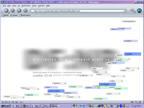
Dominant Spatial Paradigm
Distributed Form: Network Practice, University of California, Berkeley, October 22-24, 2004
"Recent developments in information technology have resulted in the entrenchment of networks and distributed systems as the dominant spatial paradigm, effectively challenging fundamental design issues of autonomy, originality, place, practice and form, which reconfigure disciplines through the implementation of distributed logics and collaborative 'open' practices. As a benchmark, this conference will analyze how the disciplines of art, science and architecture are responding to rapidly changing mobile, wireless, and information-embedded environments.
The conference will be organized around a multidisciplinary framework operating at three different scalar levels: At the Meta level, the conference will first address Form and the Network, raising issues of architectural morphology of and within networked society, by building a provisional history of networked design processes and production.
The second session, Form and Technology, will consider current research on the relationship between experimental digital technologies and emergent form.
The third panel, Micro: Form and Operation, will address theories of operative design strategies, social relationships and bodiless form.
The fourth panel, Mega: Form and Presence, will investigate how larger scale networks and their reconfiguration of time and space are altering professional design practices, while critically considering a logic of connection as the primary site of design."
Posted by jo at 06:22 PM | Comments (0)
Ursula Endlicher

Web Performer and More
Ursula Endlicher has created the October 4 artport gate page. She is a multiple-media artist working at the intersection of Internet, performance, and installation art. Since 1996, she has been keeping a critical yet humorous eye on the intricacies of the online experience, focusing on its technical and social protocols and the visualizations of interface. Her most recent web work, "Famous For One Spam" (2004), repurposes the overload of SPAM email. Another piece, "Web Performer II" (2000), lets the user choose and bring to life different characters in a play via search engine results. "Web Performer" (1999), the 'prototype,' turns your browser experience into a stage full of characters searching for their online identity. Endlicher's artwork has been presented in Europe and the U.S. by THE THING, Channel13/WNET online, Postmasters Gallery, and the Austrian Cultural Forum, New York.
Posted by jo at 10:24 AM | Comments (0)
October 03, 2004
open sessions in UpStage
Avatar Body Collision announces monthly open sessions in UpStage. The sessions will take place on the first Wednesday of each month, with times & dates on the UpStage foyer: http://upstage.org.nz:8081. Upstage is a web-based venue and tool for artists who wish to compile different digital media into live performances, in real time, for online audiences.
Starting this Wednesday, 6 October, open sessions will be held where you can observe people at play in UpStage and have a guided walk-through the tools and ideas behind the software with the people who created it.
Times for the first session on 6 October are:
California: 2am
New York: 5am
UK: 10am
Tel Aviv: 11am
Helsinki: 12 noon
Kabul: 1.30pm
Beijing: 5pm
Sydney: 7pm
NZ: 10pm
We know these times won't suit everyone; we will do another session at 10.30pm UK time (2.30pm California, 5.30pm New York) ONLY IF there are people who want it. You MUST email if you want to come to the 2nd session otherwise it WON'T happen. We are also open to suggestions for other times that would suit people, for example a weekend time.
There are two ways you can participate in the open session: you can either come as a "chatter" (audience member) and participate or lurk in the chat; or you can log in, get dressed (hold an avatar), and experience the full walk-through.
Chatters need only point their browser at this URL at the specified time: http://upstage.org.nz:8081/stages/virtual-tourist You will then see and hear (turn your sound on!) what is happening. You can participate by typing in the chat window.
To register for the full walk through, please reply to this email -- Helen Varley Jamieson [helen at creative-catalyst.com] -- and you will be sent a log-in. We also recommend that you download the manual (online at http://www.upstage.org.nz/download.html) and have a browse before the session begins.
Any questions, email helen at creative-catalyst.com
Posted by newradio at 07:10 PM | Comments (1)
October 01, 2004
Immaterial

Responding to and Tracing Past Movements
With "Immaterial", Michelle Kasprzak explores the frontiers of 3D visualization, video and live performance. Kasprzak integrates digital video loops with 3D objects being animated and textured in real time. The objects appear to be responding to the movements of the video character (Kasprzak), but it is not immediately apparent which is initiating the interaction: the character, the objects, or both. Notions of actual time and retransmissions are then questioned, and the artist herself has to confront this inversion of time by re-enacting the exact initial movements in order to maintain the integrity of the image.
Upon closer inspection, the audience slowly realizes that their initial assumption, which is that a live video is responding to pre-rendered digitised elements, is false. The performer is in the physical performance space, live, but her representation on the screen is not live. The video character is a loop, an echo of the real person at the computer. The essence of the performance is the harmonization of real time 3D graphics and a video representation of the artist.
With the palette of 3D objects transforming in real time, Kasprzak attempts to respond to and trace her past movements. "Immaterial" is Kasprzak's conversation with her video persona in 3 dimensions. View Quicktime movie.
For more Kasprzak performances, look here.
Posted by jo at 08:45 AM | Comments (0)
PERVASIVE AND LOCATIVE ARTS NETWORK (PLAN)
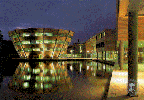
THIS IS THE (PLAN)
A new international and interdisciplinary research network in pervasive media and locative media has been funded as part of the Engineering and Physical Sciences Research Council (EPSRC) Culture & Creativity programme. The network will bring together practicing artists, technology developers and ethnographers with the aim of advancing interdisciplinary understanding and building consortia for future collaborative projects.
The network will stage three major gatherings. Each gathering will have a distinct form and focus: an initial workshop to launch the network and assess the state of the art; a technology summer camp for artists and technologists, including hands-on prototyping sessions using the facilities at Nottingham's Mixed Reality Laboratory; and a major public conference and participatory exhibition as a central component of the Futuresonic 2006 festival in Manchester; as well as a supporting web site and other resources.
CALL FOR PROPOSALS - PLAN Workshop
Submissions are invited to the first of these events, a two day public workshop with papers, demos and discussion sessions. The aim of the event is to launch the network, review the state of the art, bring key players in the field together, and make initial contacts. The event will also aim to identify a range of specific interests that can lead to the formation of sub-groups within the network. Position papers and a summary report will subsequently be published on the network web site.
The workshop will take place in London over two days in the week beginning 24th January 2005. Venue and final dates announced soon.
Please send submissions to ben@open-plan.org by Monday 8th November.
We request that participants seek support for travel and subsistence from their institutions. For participants without institutional affiliation the network shall support applications to funding councils and foundations, please contact us for further details.
THE NETWORK
Pervasive and Locative Arts Network (PLAN) - Enhancing Mobile and Wireless Technologies for Culture and Creativity
This network will draw together computer scientists and engineers who are leading the field in developing pervasive and locative technologies; artists who are using these technologies to create and publicly deploy innovative and provocative experiences; social scientists with a proven track record of studying interactive installations and performances; industrial partners from the creative industries, spanning the arts, television, games, education, heritage, mobile computing and telecommunications sectors; and international partners who are coordinating parallel networks around the world.
NETWORK OBJECTIVES
The network aims to support the formation of a new interdisciplinary research community to investigate how the convergent fields of pervasive media and locative media need to evolve in order to support future cultural and creative activities. Specific network objectives are:
-To review the scope of the research that is currently being carried out in
these fields through a focused workshop, leading to an integrated state-of-the art survey paper.
-To identify the key research issues that need to be addressed in order to further develop pervasive and locative media to support culture and creativity, leading to a series of discussion white papers.
-To seed future projects by bringing artists, scientists and industry together in a creative environment so that they can generate and practically explore new ideas, and also to provide a forum for publicly demonstrating some of these.
-To produce online and offline resources to support researchers, artists, industry and to promote public understanding of this emerging field, including a public website, an online document repository for members and a newsletter and DVD.
NETWORK ACTIVITIES
The network will organise and support a range of activities aimed at growing a research community and generating new collaborative projects between artists and technologists. These will include staging three major research gatherings, producing online and offline resources for fellow researchers and PhD students, and outreach activities targeted at industry.
Gatherings
We will stage three major gatherings. Each gathering will have a distinct form and focus: an initial workshop to launch the network and assess the state of the art; a technology summer camp for artists and technologist, especially PhD students, including hands-on prototyping sessions using the facilities at Nottingham's Mixed Reality Laboratory; and a major public conference and participatory exhibition as a central component of the Futuresonic 2006 festival in Manchester. These major gatherings will be interspersed with more ad-hoc steering and reflection meetings as required by the network participants.
Producing resources
We will produce resources to publicise the network, encourage the exchange of perspectives and discussion, and to provide tutorial support for PhD students, artists and other researchers who wish to break into this area. These will include:
-Online resources: a public website providing access to network information including project deliverables as well as news of forthcoming calls for proposals and conferences, supported by a online document repository where members can upload documents and take part in discussion. The latter will be realised using BSCW or Project Place software.
-Offline resources: a six monthly printed newsletter and a DVD of video
Outreach
The network will reach out to other researchers beyond the initial partners and also to the creative industries. This will include distribution of the newsletter and also staging a series of industry seminars, for example as part of the TI/EPSRC Outreach programme. The network research associate will also carry out a series of site visits to different partners and potential partners in order to learn more about and report on ongoing activities.
BACKGROUND IN SCIENCE AND CULTURE
A new generation of pervasive technologies is enabling people to break away from traditional desktop PCs and games consoles and experience interactive media that are directly embedded into the world around them. And locative media, the combination of mobile devices with locative technologies, supports experiences and social interaction that respond to a participant's physical location and context. Together these convergent fields raise possibilities for new cultural experiences in areas as diverse as performance, installations, games, tourism, heritage, marketing and education.
A community of researchers working in pervasive media, also known as ubiquitous computing, are exploring location awareness as a requirement for the delivery of accurate contextual information. Another community, primarily consisting of informal networks of technical innovators and cultural producers, which identifies its field as Locative Media, is exploring developments in and applications of locative technologies within social and creative contexts. One of the aims of this network is to bring these two communities together, linking academic research initiatives and agendas to key figures and ground breaking developments that are currently taking place outside mainstream academia.
The creative industries are also beginning to take up these opportunities, led by artists who are actively charting out the potentials and boundaries of the new pervasive and locative media. Other cultural sectors have also been exploring the potential of pervasive and locative media including the games industry through commercial examples of locative games played on mobile phones such as Bot Fighters and Battle Machine and also research projects such as ARQuake, Mindwarping, Pirates! and Border Guards. Researchers have also demonstrated applications in heritage and tourism, for example personal tourist guides and outdoors augmented reality displays and as well as in mobile learning experiences and participatory local history mapping projects.
A key characteristic of this research is its interdisciplinary nature, with many of these projects combining practicing artists, technology developers and also ethnographers, whose studies of early experiences that are actually delivered as public artworks have yielded new insights into the ways in which participants experience pervasive media, for example how they (and performers and technical crew) deal with uncertainty of location and connection, and, conversely, new metaphors for engaging in locative media.
However, realising the full potential of pervasive and locative media requires several further developments. First, it is necessary to expand the research community, drawing in new academic partners and also a greater range of partners from the creative industries. Second, it is important to deepen the interdisciplinary relationships between artists, technology developers and social scientists working within and between these two convergent fields. This is not only a matter of reflecting on this relationship, it is also necessary to pursue it in practice, which means forming new collaborations leading to practical projects. Third, we need to clarify and deepen the research agenda for this area, by opening up a variety of research questions, including:
-To what extent does the convergence of pervasive media and locative media signify a commonality of views, definitions and issues in each field?
-What new kinds of cultural applications will become possible through pervasive and locative media? Can we envisage new installations, performances, games and other public experiences?
-Can common design frameworks and tactics help create powerful user experiences? Can we identify and share design guidelines and generate useful abstractions, for example building on recent proposals for deliberately exploiting uncertainty and ambiguity
-What tools are required by creative users, for example that enable them to easily (re)configure an experience to work in different locations or to orchestrate it from behind the scenes. What new research challenges do these embody, for example, how do we visualise the state of the technical infrastructure-networks and sensors-96 or intervene in participants' experiences?
-What methods do researchers use to design and evaluate their experiences? We already see the use of ethnographic studies, audience discussions and even analysis of system logs; how should these be extended and can we share approaches, tools and even datasets to enhance our understanding of experience and design?
These questions, combined with the need to build a broader inter-disciplinary research community, provide the underlying motivations for this network.
INITIAL NETWORK
Project investigators:
Steve Benford, Nottingham (Principle Investigator)
Drew Hemment, Salford
Henk Muller, Bristol
Matthew Chalmers, Glasgow
Michael Sharples, Birmingham
Geraldine Fitzpatrick, Sussex
Christian Heath, Kings College
Jon Hindmarsh, Kings College
Network co-ordinator:
Ben Russell, Headmap/Locative Media Lab
Initial partners:
Marc Tuters, Locative Media Lab
Dennis Del Favero, NSW iCinema
Steve Sayers, NESTA
Toby Barnes, EM Media
Richard Hull, HP Labs
Denny Plowman, City of Nottingham Council
Sara Diamond, Banff Centre
Andrew Caleya Chetty, Metapod
Amanda Oldroyd, BT Exact
Matt Adams, Blast Theory
Nick Southgate, Ricochet TV
Annika Waern, iPerG
Giles Lane, Proboscis
Minna Tarkka, m-cult
Carsten Sorensen, LSE
Angharad Thomas, Salford
Chris Byrne, New Media Scotland
Paul Sermon, Salford
Nina Wakeford, INCITE, Surrey
Posted by jo at 08:20 AM | Comments (0)

